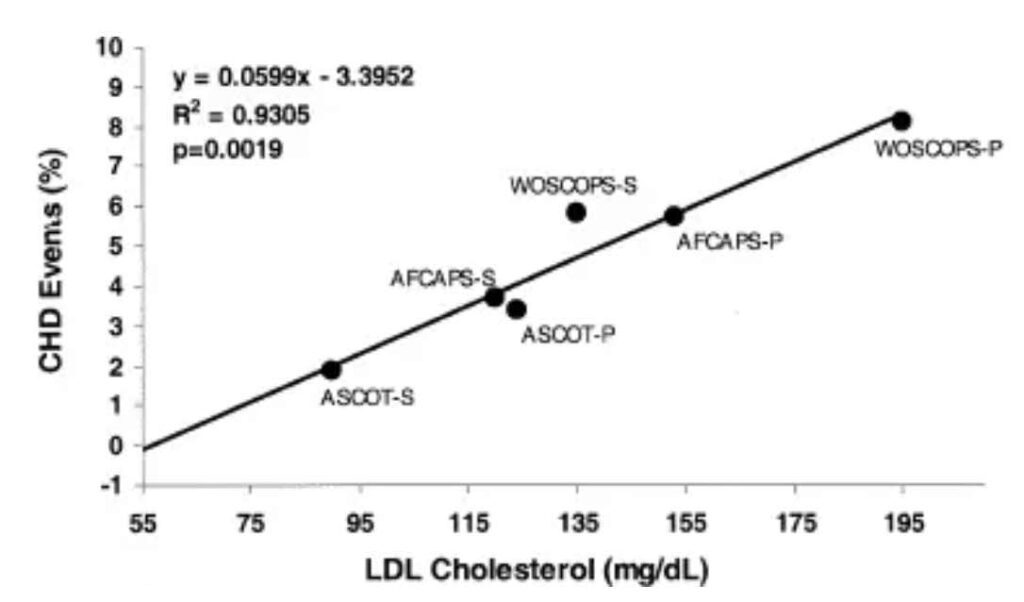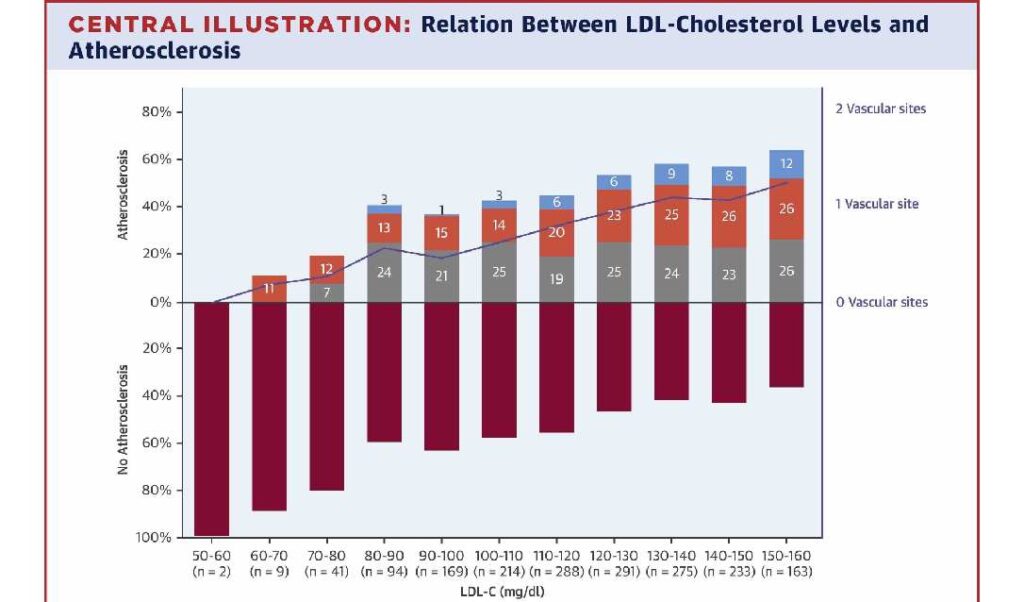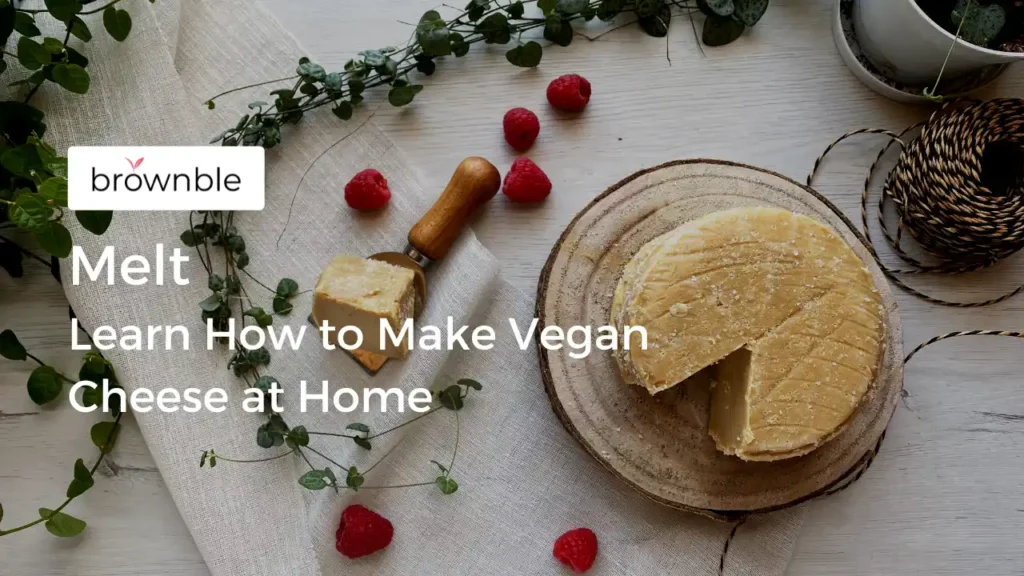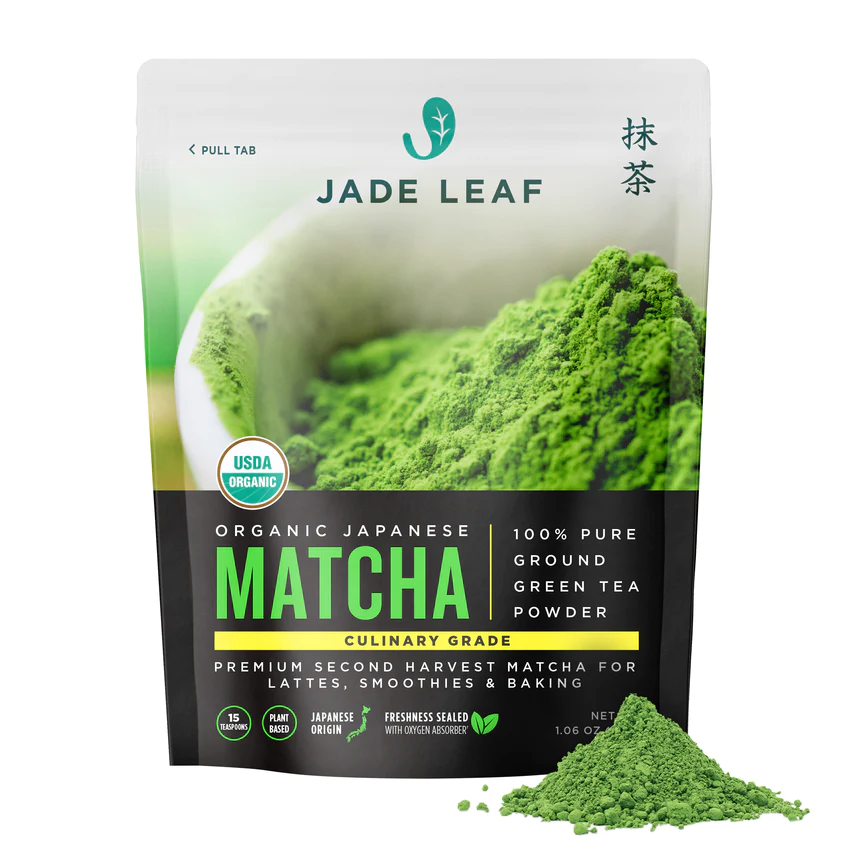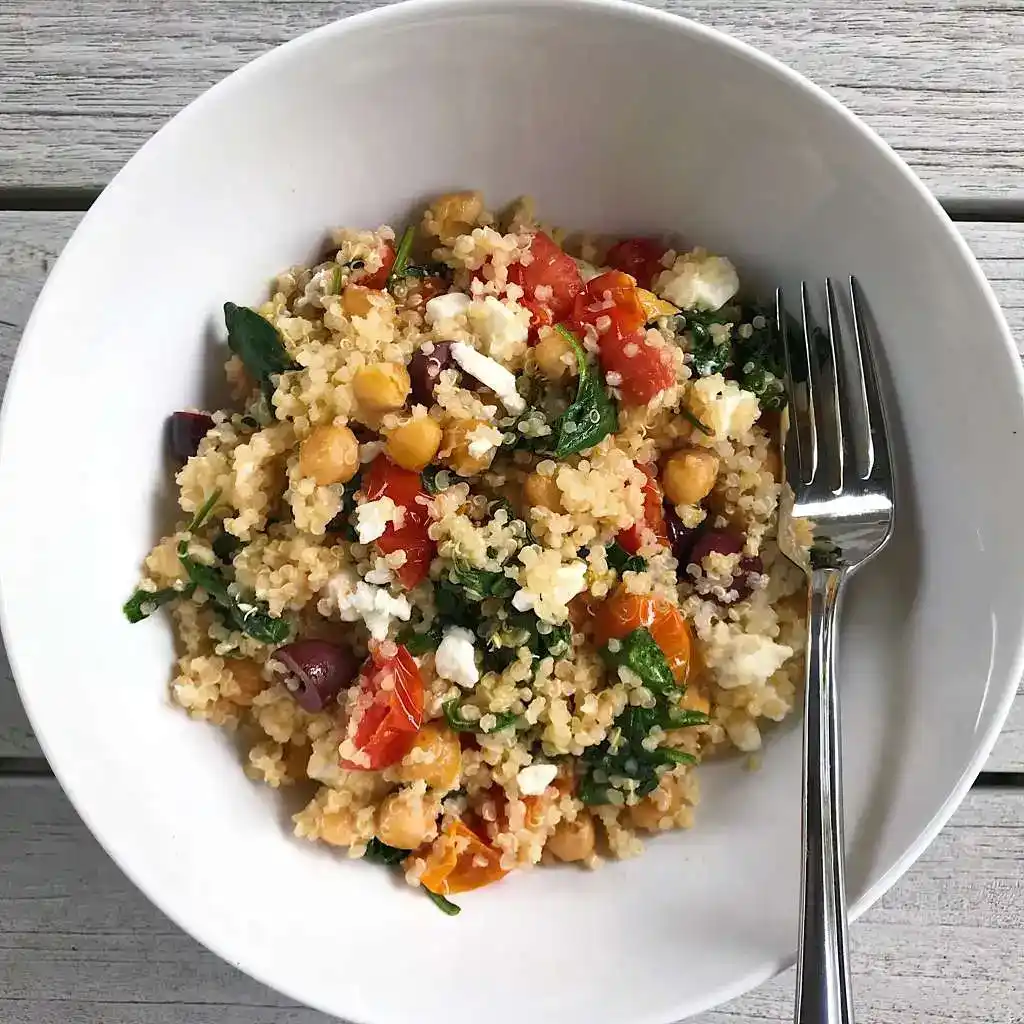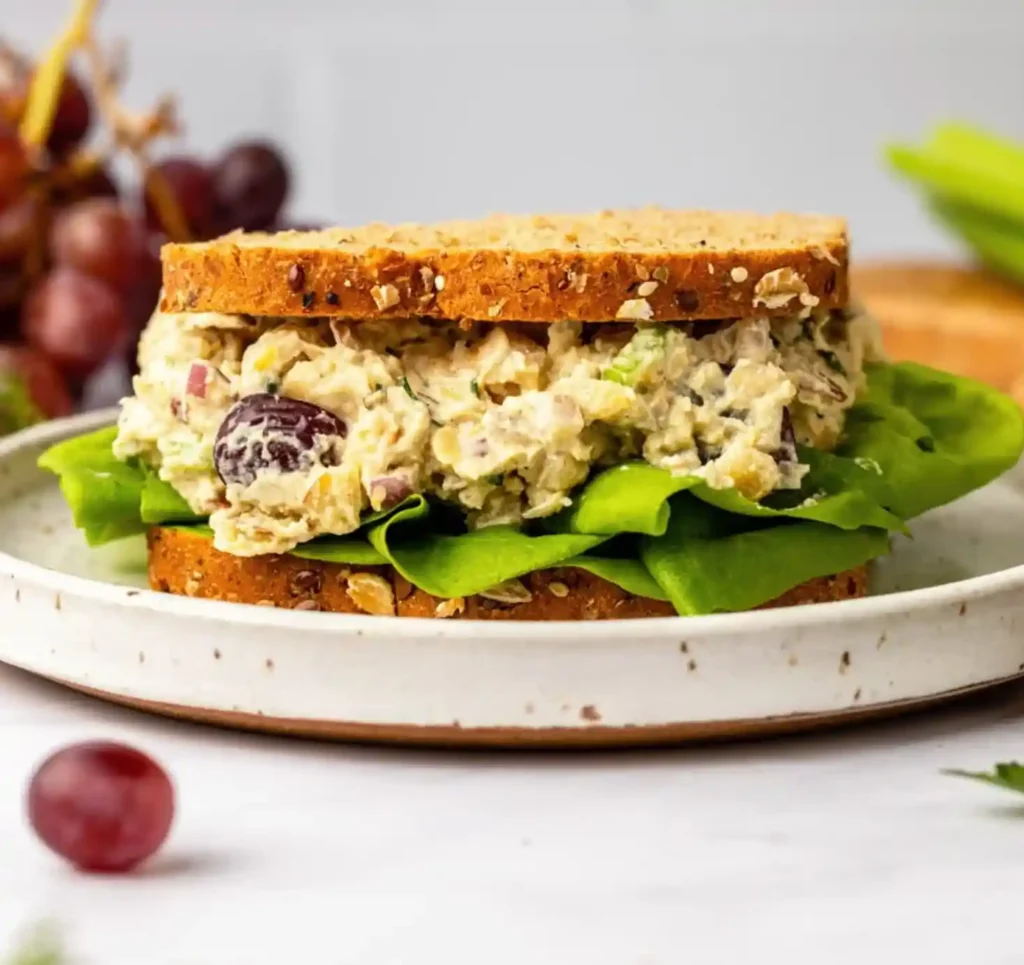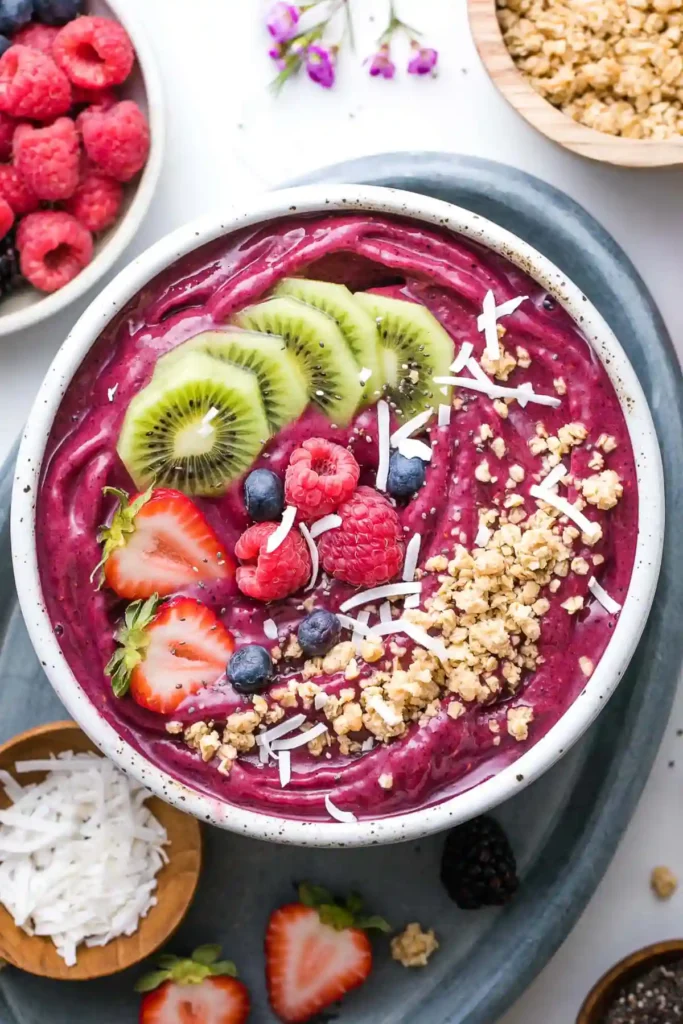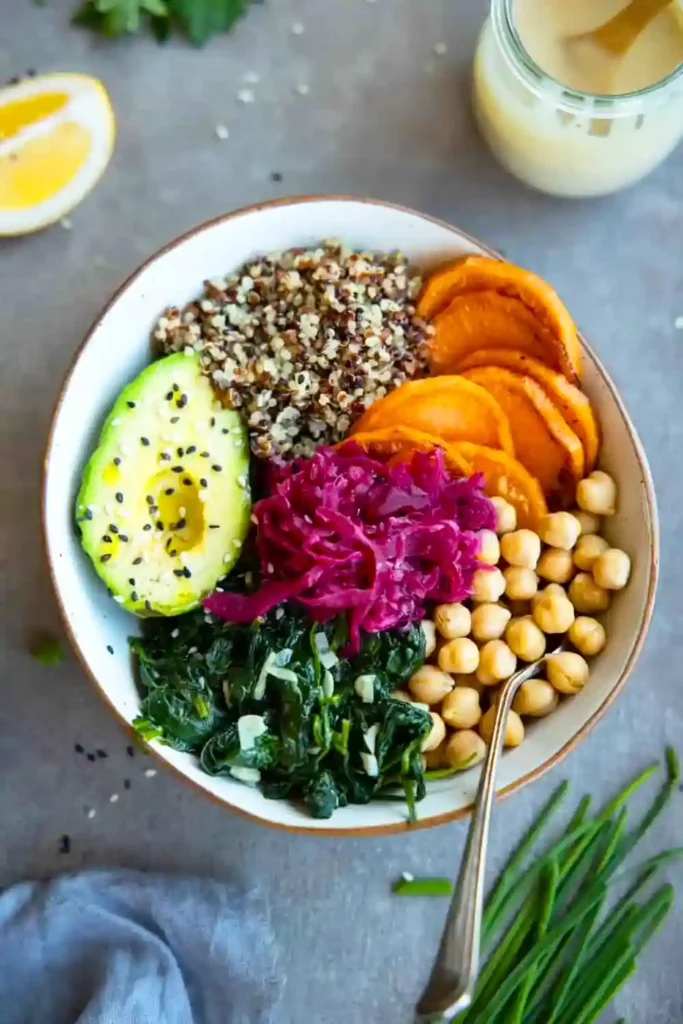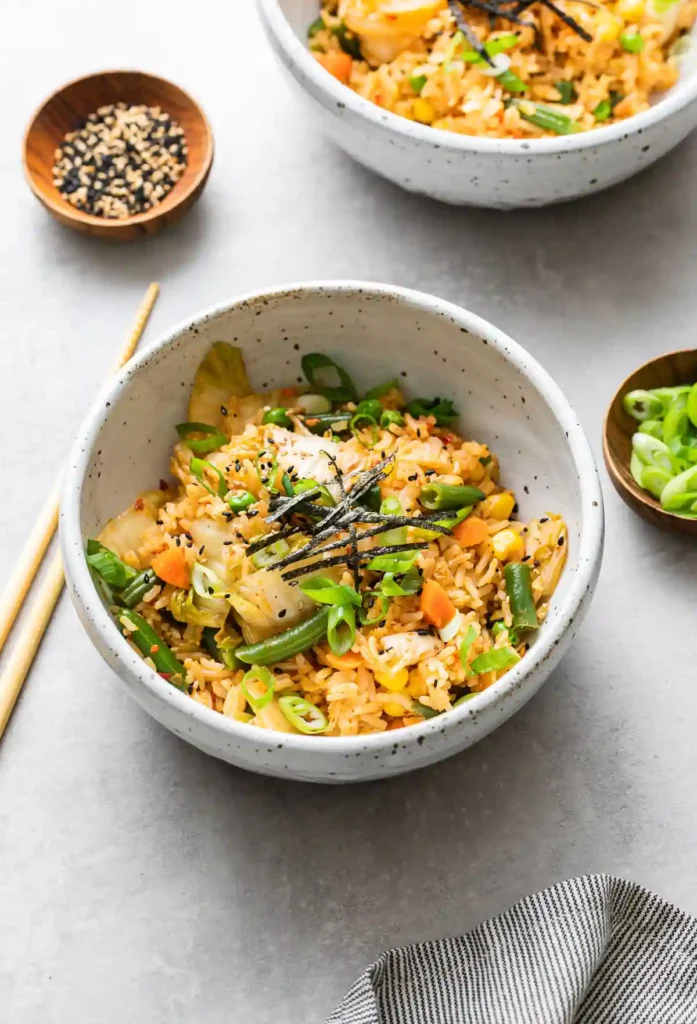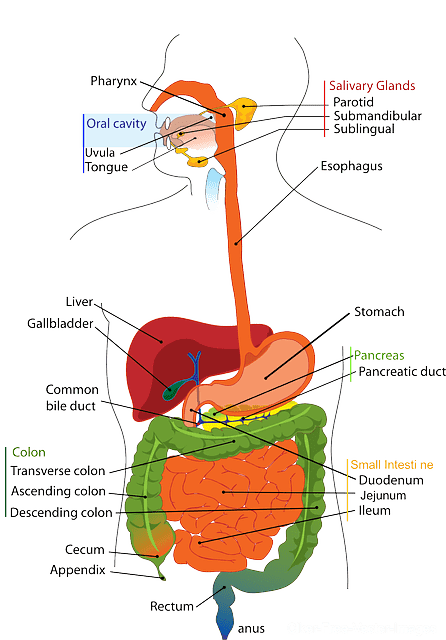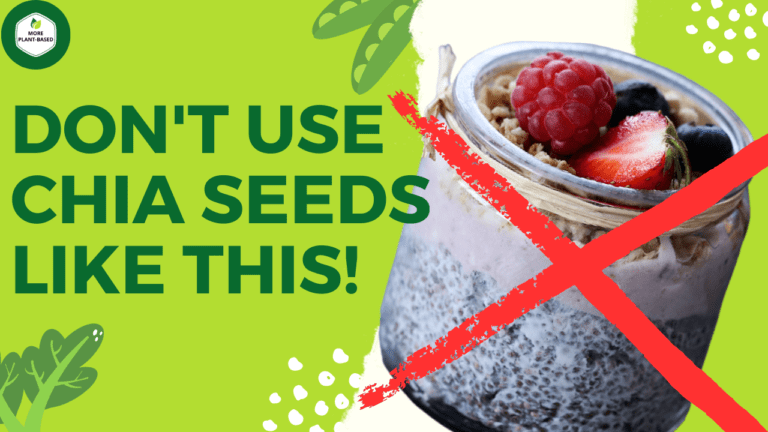4 Types of Plant-Based Diets | Weight loss | 9 Health Benefits
Environmental Impact | 5 Essential Nutrients | 6 Tips for Transitioning
9 Foods to Avoid or Minimize | 6 Tips for Meal Planning & Grocery Shopping
7-Day Meal Plan | 4 1/2 Common Challenges | 4 Myths Debunked
Stories of Transformation | Conclusion & Resources
In this guide, I’ve included a few products that I genuinely believe can support you on your plant-based journey. If you decide to make a purchase through the links on this page, it could earn me a modest commission. This support greatly contributes to maintaining this website and creating extensive guides such as this one, which can be of great benefit to others.
I want to point out that every product is either part of my own routine or something I’d be happy to use when needed.
Thank you for being part of the community!
Are you considering adopting a plant-based diet but unsure where to start? Or are you interested in seeking more insight? Then look no further!
In this comprehensive step-by-step guide, we’ll walk you through the basics of transitioning to a plant-based lifestyle.
A plant-based diet focuses on consuming mostly whole, unprocessed foods derived from plants while eliminating or minimizing animal products. With the rising popularity of this dietary approach, it’s no wonder more and more people are curious about its benefits.
In this all-encompassing guide, we’ve got you covered from start to finish.
We’ll delve into the health advantages of a plant-based diet, dispel misconceptions, address common challenges, consider its environmental impact, discuss food choices (what to embrace and what to avoid), offer valuable resources, and practical advice on grocery shopping, meal planning, dining out, all while providing you with a complete 7-day meal plan.
Whether you’re motivated by ethical reasons, environmental concerns, or simply looking to improve your overall well-being, this guide will equip you with the knowledge and tools to make a successful transition.
Embarking on a plant-based lifestyle may initially seem overwhelming, but with the right guidance, you’ll gain the confidence to make sustainable choices that align with your values and health goals. Let’s dive in and discover the power of plant-based living together through this plant-based diet for beginners’ guide.
4 Types of Plant-Based Diets
When it comes to plant-based diets, there are several variations. The most common types include flexitarian, vegetarian, vegan, and WFPB diets. Let’s explore each of these in more detail:
1. Flexitarian
A flexitarian diet, or a “flexible vegetarian” diet, is a flexible approach to plant-based eating that allows for occasional consumption of animal products. Plant-based, as the name implies, is based on a foundation of plant foods. It’s not necessarily limited to only plants. Flexitarians primarily focus on plant foods but may occasionally incorporate meat, fish, or dairy into their meals.
2. Vegetarian
A vegetarian diet eliminates meat, fish, and poultry from the diet but may still include animal-derived products such as dairy and/or eggs. For example, Indian vegetarians usually consume dairy but do not consume egg. Any vegetarian dietary approach allows for greater flexibility and can be easier to adopt for those transitioning to a plant-based lifestyle.
3. Vegan
A vegan diet excludes all animal products, including meat, fish, poultry, dairy, eggs, and even honey. It is a more strict form of plant-based eating but offers numerous health and environmental benefits. Typically the term vegan is used for people who wish to minimize the harm that is caused to animals. Besides animal agriculture, vegans typically avoid supporting any industry that is based on entertainment at the expense of animals
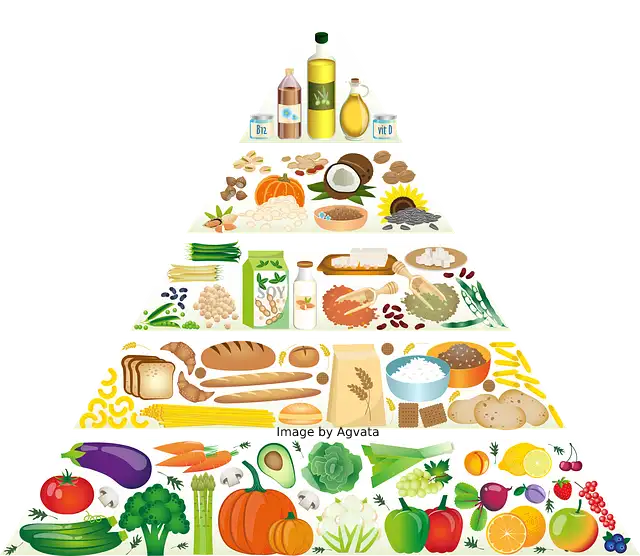
4. Whole Food Plant-Based (WFPB)
A WFPB diet focuses on whole, unprocessed plant foods. It avoids animal products and minimizes refined ingredients. It often gets confused with a vegan diet, because of the emphasis on plant foods. The big difference however is that a vegan may still indulge in unhealthy or refined foods.
Someone dedicated to eating WFPB:
- puts the spotlight on whole, less processed foods;
- minimizes or excludes animal products;
- puts plants at the center, like veggies, fruits, whole grains, legumes, seeds, and nuts, forming the bulk of your meals;
- leaves out refined items such as added sugars, white flour;
- abstains from using any oil, also during the cooking process. People refer to this as oil-free cooking.
“But which one is the healthiest?” You might wonder.
We’re going to look at a very interesting study done among the healthiest and longest-living people on the planet in the section 9 Health Benefits of a Plant-Based Diet, and see whether we can discover what is the healthiest plant-based diet.
Bottom Line:
Choosing the right type of plant-based diet—from a flexible plant-based diet to the most plant-based diet—is a personal decision that depends on your individual preferences and goals. It’s important to find a balance that works for you and aligns with your values.
Plant-Based Diet for Weight Loss
What is the most ideal weight?
The largest studies in the United States and around the world found that having a normal body mass index (BMI) of 20 to 25, is associated with the longest lifespan. What not everyone knows is that we can narrow that number down much more.
Put all the best available studies with the longest follow-up together, and we can narrow it down to 20 – 22.1
Do you want to know your BMI?
Here’s an easy way to check.
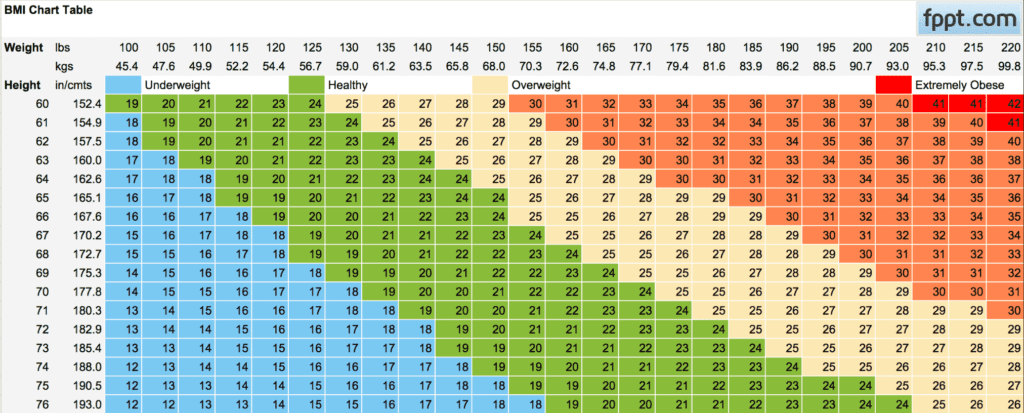
Please take into account that BMI becomes less accurate as muscle mass increases. That’s why it’s only an average. A bodybuilder for example can easily have a BMI of over 25 but have healthy levels of fat.
When I was still in my twenties, I was a fanatic weight lifter. I used to have a BMI of 27-28. After I stopped with intense weight lifting, my BMI slowly dropped to 20-22 which it has been ever since.
If you’re weight and/or height are not listed, or you want calculate in more detail, there’s another way to measure your BMI:
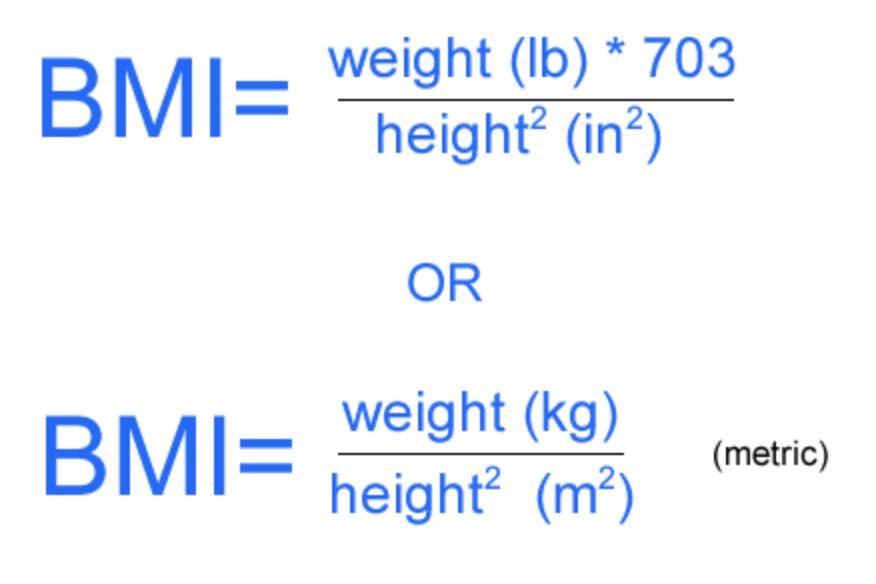
For example:
- A 5’11”, 140 lb. individual’s BMI should be calculated as:
BMI = 150 * 703 / 712 ≈ 20.89 - A 170cm, 60 kg’s individual’s BMI should be calculated as:
60 / 1.72 ≈ 20.76
What’s the connection between a plant-based diet and weight loss?
Plant-based meals tend to be lower in calories while providing ample nutrients, making it easier to lose weight and/or maintain a healthy weight.2, 3, 4, 5
The healthiest and longest-living population on earth, and considered the top of five blue zones, the Seventh Day Adventists, have been extensively studied in regard to their diet and lifestyle.
What this study clearly shows is that the more plant-based foods one consumes, the lower the BMI gets. The group that ate either exclusively plant-based or had some animal products once a month or less, was the only group that had a BMI under 25, namely 24.1.

Bottom Line:
A healthy weight correlates to a longer life. An average person can calculate their weight with the BMI index. A number of 20-25 puts you in the healthy range. However, the most ideal number is 20-22.
9 Health Benefits of a Plant-Based Diet
A plant-based diet offers numerous health benefits that can improve your overall well-being. Research has shown that individuals who follow a plant-based diet have lower risks of developing chronic diseases such as heart disease, diabetes, and certain types of cancer.6
Large healthcare organizations such as Kaiser Permanente are promoting plant-based diets for all of their patients because it is a cost-effective, low-risk intervention that treats numerous chronic illnesses.6
1. Plant-based diets can lower saturated fat and LDL cholesterol:
The main cause of a higher LDL is saturated fat. That makes saturated fat one of the main contributors of cardiovascular disease (CVD) such a as heart disease. Plant-based diets are lower in saturated fat and, therefore reduce your risk of developing CVD.
LDL is often called “bad cholesterol.” It’s not exactly cholesterol itself, but a carrier that can sometimes lead to cholesterol building up in your arteries, which isn’t good for your heart.
LDL is not inherently bad, but it becomes a problem when it gets too high. And it easily gets too high. Population studies have shown that the lower the LDL drops, the lower the cases of heart disease and heart attacks. Contrarily, the higher LDL gets, the more heart disease. That produces an almost “linear” result as you can see from the graphs.7, 8, 9, 10, 11
The most recent review coming out of the most prestigious Cochrane Institute clearly states that lowering saturated fat lowers your risk of heart disease.12
The cholesterol paradox
The last decade or so a paradox has started emerging and it gets lots of attention on social media every time a new study comes out that confirms this paradox.
The paradox implies that it doesn’t matter if your LDL is high. People with low LDL also die of heart disease and therefore there is no clear link between LDL and heart disease.
This is completely misleading and a manipulation or misuse of scientific data at worst and a misunderstanding at best.
The studies that come to this conclusion, including three well-known studies I reference here, make the mistake of lumping together all the data and overlooking the quality of food sources.13, 14, 15
One of these studies even claims that health-promoting polyunsaturated sources of fat (PUFA) as found in nuts, seeds, and fish are associated with an increased risk of CVD.14 This is the exact opposite of what’s actually happening, as we’ll discover in a moment.
They furthermore tend to exclude some major landmark studies, such as this one which included over a million participants.
Another landmark study, out of Harvard, one that is never included in paradox studies, was the first study that showed why you can’t simply lump all the data together.
They found that when you replace saturated fat with refined carbs such as refined starches and sugars there’s no clear health difference. No surprise there.
However, here is why you should never lump together all carbs. When saturated fat was replaced with wholesome carbs like whole grains, the risk of heart disease dropped.
And when saturated fat was replaced with unsaturated fat, the risk dropped even further.15
This is perfectly in line with the results from genetic studies. Some people have a genetic mutation in their genes that causes them to always have a low LDL. All these people have much lower risks.16
The conclusion that PUFAs are unhealthy is based on studies such as the one referenced here.17
It has basically lumped all sources of PUFA together. The biggest sources of PUFAs were actually desserts, cakes, and pastries.
You can understand that it would be wrong to compare pastries and cakes with avocado, fish, nuts, or even PUFA-rich oils.
Yet, that’s not what they tell you when this message spreads across social media. Neither does it make for attractive headlines.
The S-curve
Another thing these paradox studies overlook is the S-curve phenomenon.
This is an S-curve:
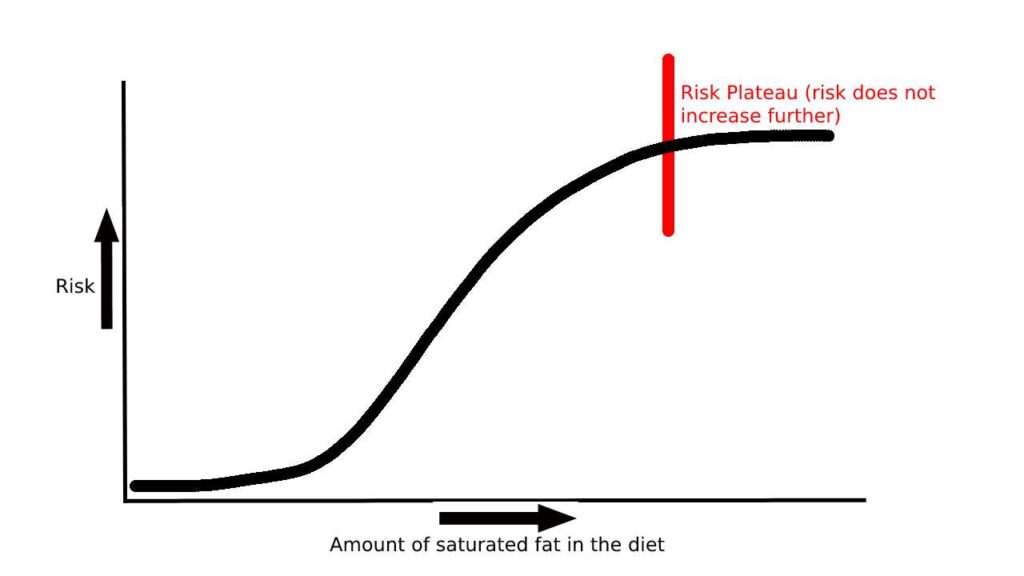
One famous paradox review included studies where 97% of people had an intake of saturated fat above the recommended upper intake of 10% of total energy, namely 12 – 18%. 18
At some point, the risk doesn’t increase further. So whether you’re at a 12, 15, or 18% intake, the results are not going to show any difference.
The PUFAs they were comparing in the study also contained trans fats which are actually the most harmful fats. These fats are usually found in highly processed foods such as pastries, cakes, cookies, etc.
Although in the study they could have also come from margarine.19 Nowadays, most margarine is free from trans fats but that was not the case at the time of research.
“But,” they say, “some people with lower LDL still die just like people with higher LDL.”
This is actually true.
But it’s truth taken out of context. So let’s try to put it into context.
Disease can lower LDL
It’s well-known that various diseases can lower cholesterol, including LDL. This is sometimes called the “unsuspected sickness phenomenon,” which is one of the reasons for the emergence of the cholesterol paradox theory.20
For example, many types of cancers cause a drastic lowering of LDL, even ten years before diagnosis.21
So when people with cancer who have low LDL pass away, you shouldn’t include those deaths in the mortality rates of LDL. LDL was merely a symptom of an underlying disease. They died due to the disease, not the symptoms.
We face a similar issue with diabetes as we’ll cover in this section as well.
2. Plant-based diet for heart health
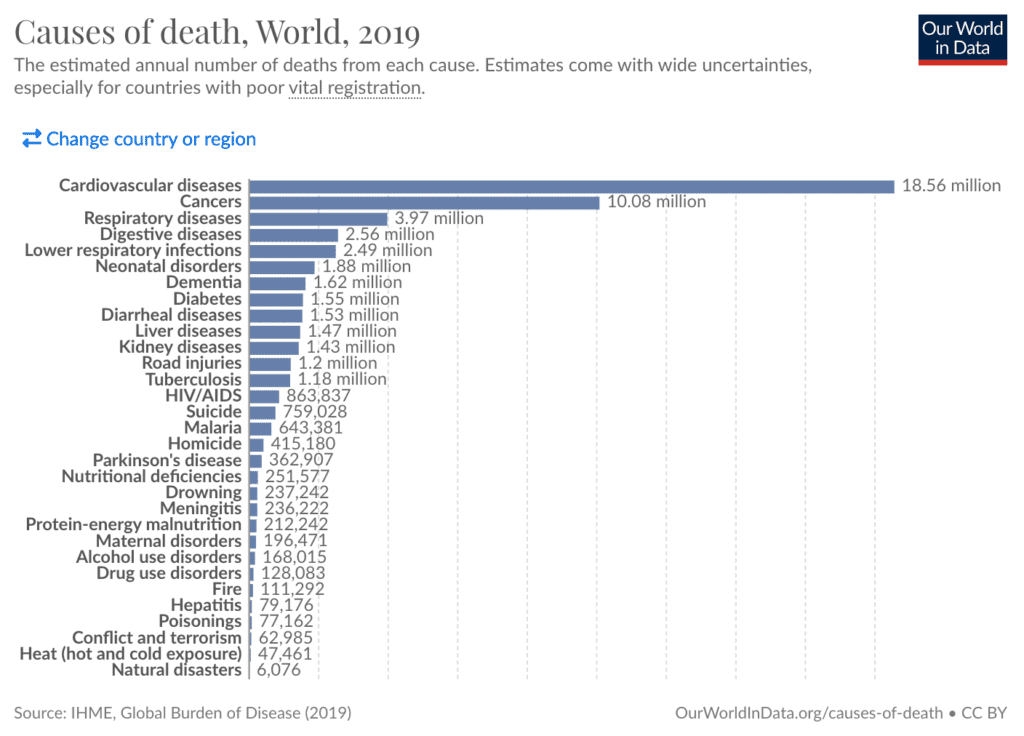
The chart above represents the global causes of death. If you click on the link and look up this chart, you’ll find an option to change the location at the top of the chart (it’s the blue-colored “Change country or region” right above cardiovascular diseases).
Take a moment and look up your country’s number 1. Unless you’re living in a yet relatively underdeveloped country, guaranteed that the number 1 cause of death is either cardiovascular disease or cancer.
Browse through the list, click on different countries, and you’ll find that this is indeed true.
Cardiovascular disease (CVD) is a broad term covering heart and blood vessel issues. The most common type is coronary artery disease (CAD), caused by plaque buildup (atherosclerosis) narrowing the heart arteries. If the blood vessels in the brain are affected like this, it’s called a stroke.
As mentioned previously, plant-based diets are typically lower in saturated fats and cholesterol, which can help reduce the risk of heart disease. They are also rich in fiber, vitamins, minerals, and antioxidants, which play a crucial role in supporting a healthy immune system and preventing inflammation.
It would be more interesting, though, if we could compare a solid plant-based diet against a diet such as recommended by a national institute like the American Heart Association (AHA) on people who already have heart disease. Has there been any research done?
Yes indeed.
A comparison
The plant-based diet was a vegan diet. The vegan diet and the AHA were put head to head for 8 weeks.22
What were the results?
Both groups saw various improvements regarding their blood sugar, insulin, weight, and lipids in the blood. One group didn’t really outperform the other. The vegan group did have a 13% lower drop in LDL but it wasn’t considered significant. However, the vegan group differed in two things:
1. CRP (C-Reactive Protein), a well-known marker of inflammation, and a risk factor for various chronic diseases (incl. heart disease), dropped 32% more than the AHA diet group.
It’s not clear what the exact vegan diet was composed of, but it does NOT look like it was a high-quality plant-based diet. The fiber intake was only 36 grams, which is really low compared to a whole food, plant based diet (with the same amount of kcal), which could reach almost double that for the calories they consumed (1700+ kcal).
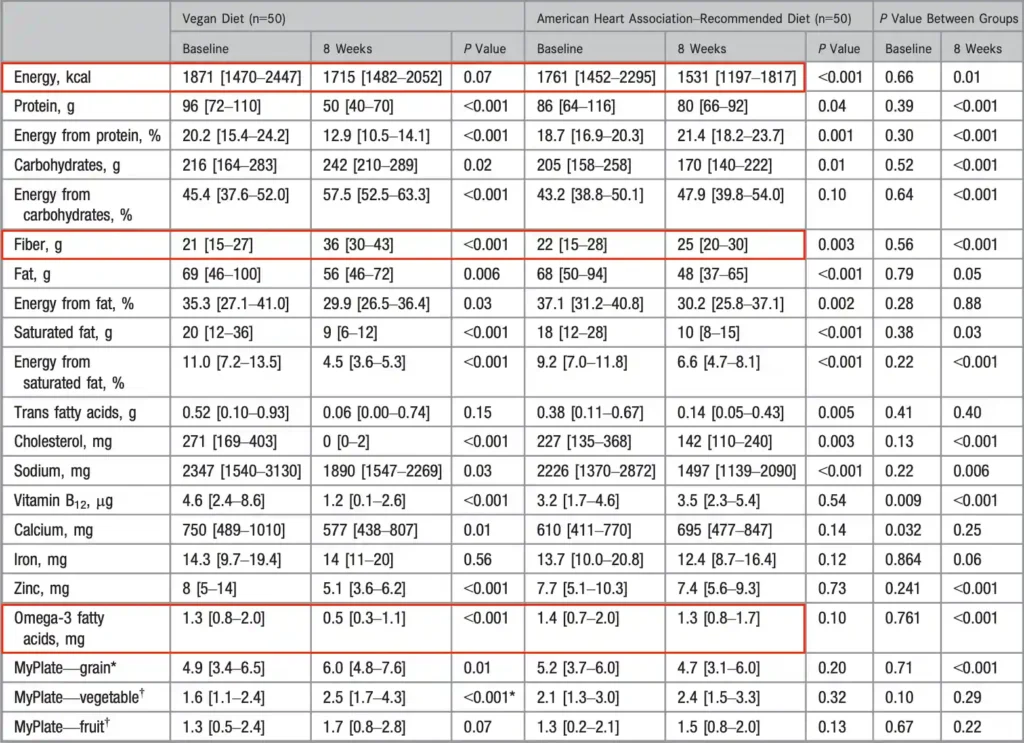
That also means that the participants ate a substantial amount of refined foods, which are harmful as explained in saturated fat and cholesterol. To be fair, the AHA diet suffered from the same thing.
The vegan diet suffered another problem but it is unlikely to have had an effect on the results:
The omega-3 content from the vegan group was significantly lower. At 0.5 grams, it was over 4 times lower than some of the recommendations (see benefit #6 on immunity). In a moment we’ll see why that can potentially become a problem when it is maintained long term.
2. The vegan diet was 9.5 – 11% higher in calories. Despite the extra calories, both groups lost a similar amount of weight.

What are some of the other results of plant-based diet studies?
Overall, they have an excellent track record when it comes to heart protection. The authors of a recent review from 2023—that compared 55 studies from the last decade—conclude that a plant-based diet offers health benefits and is strongly linked to a lower risk of heart disease.23
Similarly a comprehensive review of studies from 2022, the researchers came to the conclusion that a plant-based diet is heart-protective.24
Now you may wonder: “Are the causes of death listed in the table not referring to mostly older people who are more likely to die of heart disease in the first place?”
That may indeed seem so, but the sad reality is that CVD and cancer are unfortunately also the top killers of younger people in the age group of 15-49 (see image below). But the good news is that a healthy plant-based diet can significantly lower your risk.
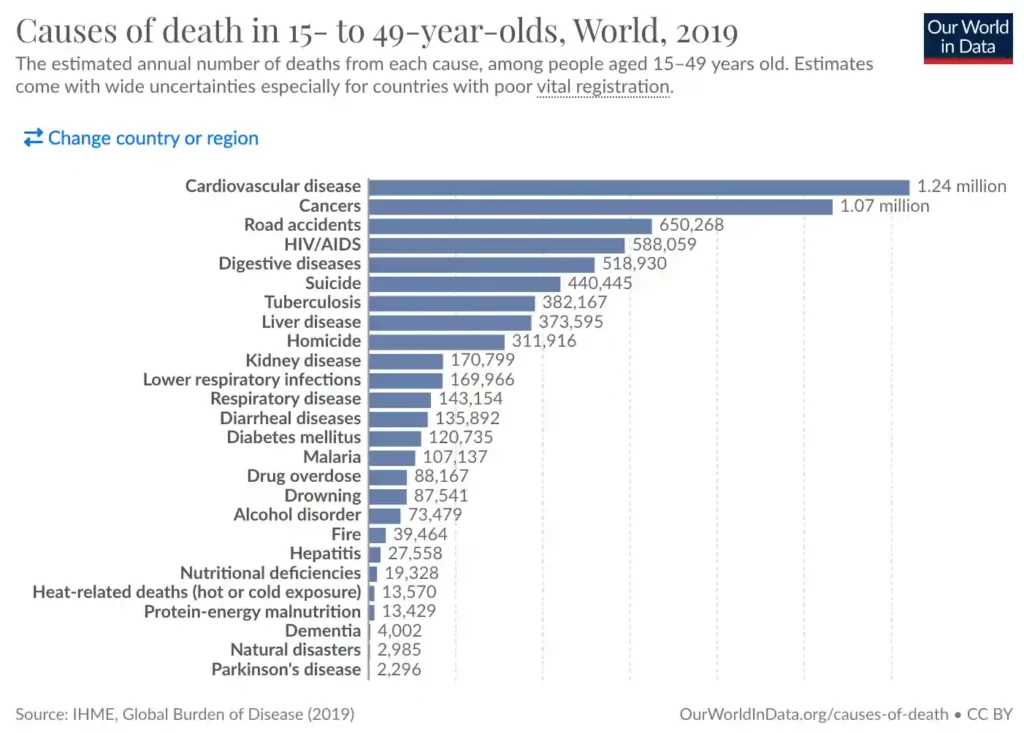
3. Plant-Based Diet for Diabetes
There is a general consensus that the elements of a whole-foods plant-based diet—legumes, whole grains, fruits, vegetables, and nuts, with limited or no intake of refined foods and animal products—are highly beneficial for preventing and treating type 2 diabetes.6
However:
Not all plant foods are created equal. Especially not when they are created by man:
Plant foods such as refined grains and added sugars are linked to weight gain and insulin resistance.6
There’s one particular type of plant food that is incredibly effective for blood sugar control. We’ll cover that in a moment as well.
Insulin resistance can be seen as the actual disease, whereas high blood sugar is the symptom. Someone who has insulin resistance and decides to lower their carb intake would definitely experience a decrease in their symptoms.
But simply decreasing symptoms doesn’t automatically mean that the root problem gets fixed.
Here is a simple analogy that explains how insulin resistance works.
Think of insulin resistance as a locked door. Insulin, a hormone, acts like the key that unlocks the door, allowing sugar to enter our cells for energy. Picture sugar as a person and a cell as a room. When the door is locked due to insulin resistance, sugar can’t easily enter the cells. Instead, it stays in the bloodstream, leading to high blood sugar levels.
This is similar to a group of people waiting outside a locked door in a narrow hallway, unable to enter a room. As a result, the hallway gets congested and causes issues for all the people in the building, just like the elevated sugar levels in the blood can lead to problems in the building that is your body.

When someone with diabetes goes to a doctor, it is highly likely that the doctor and perhaps a dietitian recommend them to follow a special diet as recommended by the health guidelines or Diabetes Association.
In the standard diabetes diet, carbs make up the majority of calories. Here’s a pdf of the diet recommended by the American Diabetes Association.
How do diets like this compare to a diet that contains more plant foods?
The most recent comparison study, a randomized controlled trial, dates from 2016. Scientists and nutritionists followed people with type 2 diabetes over a period of 12 weeks.25
One group was on a diet that is typically suggested for diabetics. The other group followed a vegan plant-based diet that was centered around whole foods with brown rice as the biggest staple of grains. Unlike the diabetes diet group, the vegan diet group was told not to restrict calories, i.e., eat as much as they feel like.
The results?
Although the people following the conventional diabetes diet improved their HbA1c levels (HbA1c levels show how well someone’s blood sugar has been behaving over a few months), by 0.2%, the vegan diet group improved their HbA1c levels more than double, by 0.5%. Both diets were “high carb diets” and the vegan diet had on average an 8% higher carb intake.
Carbs are clearly not the cause of diabetes. The quality of carbs makes all the difference. That said, judging from fiber intake in relation to the total caloric intake, participants in both groups clearly had some refined sources of carbs in their diet, though the vegan dieters had fewer. In other words, the results could have been more pronounced.
Coming back to our hallway analogy, the results imply that the hallway had become significantly less congested on a plant-based diet.
The conclusions of a review which looked at the totality of evidence of plant-based diets, are in line with the results from this trial. When compared to start of a trial, or compared to other control groups, plant-based diets led to substantial weight loss in individuals with Type 2 diabetes, reduced blood pressure, and LDL cholesterol.26
The best food for diabetes
This food really was a lifesaver for a pregnant woman who came to me for help.
She developed diabetes during her pregnancy (gestational diabetes) and her lipid levels in the blood were sky-high due to a genetic trait. Her health condition endangered both herself and her unborn child.
By adding more whole plant foods into her diet, her condition improved, but the real game changer was:
Legumes, or beans and lentils.
By adding in regular portions of legumes (in her case 2 to 3 servings), she managed to lower her blood sugar enough to keep herself and her baby safe. By adding a portion of legumes for dinner, her normally overly-high blood sugar after breakfast was blunted significantly.
This powerful effect of legumes is also called the “second meal effect.” Even if you were to drink sugar water in the morning, the spike in blood sugar is lowered substantially if you had a portion of legumes for dinner the night before.27
That’s because by the time the beans or lentils reach the lower gut, they start to produce powerful compounds called short-chain fatty acids (SCFAs). They affect the way your body metabolizes carbohydrates. More about SCFAs in the immunity section further down below.
4. Plant-based diet for high blood pressure:
High blood pressure is probably the most underrecognized symptom there is in society. Guaranteed you know people who have high blood pressure. The problem is that it’s a symptom and not a disease.
So people often don’t see the immediate consequences of what high blood pressure can do. There is an unforeseen delay that prevents them from seeing that.
I do wish to point out the seriousness of this matter, so perhaps it’s easier to do that through a chart:
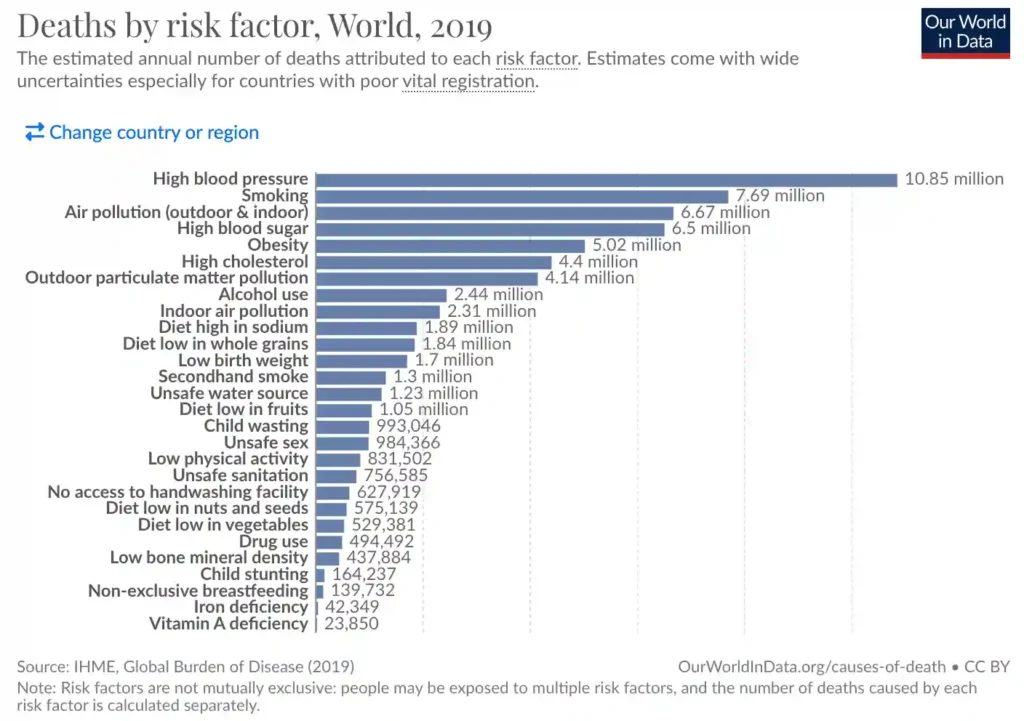
If you do the same check as before for your own country you’ll see that high blood pressure is either your number 1 or 2 top risk factor, i.e., the thing that eventually kills you. High blood pressure is almost always number 1.
Only in a minority of developed countries does smoking edge out the number 1 spot. And if you look carefully you’ll also notice that the earlier mentioned diabetes, obesity, and high blood sugar are likely to be your number 2-5 in any random order.
What can plants do?
A review of 15 randomized controlled trials concluded that plant-based diets are effective at lowering hypertension, particularly the 100% plant-based vegan diets.28
But there’s good news:
Whether or not you’re a flexitarian, a vegetarian, or a vegan, with the addition of a few simple plant foods, it’s incredibly easy to lower your blood pressure.
Sure, more plant-based foods can make it easier but that shouldn’t stop you from including some of the most powerful plant foods that can effectively lower your blood pressure.
Here are some examples of food or food groups that have been found to have a positive effect on blood pressure:
Flax seeds,29 hibiscus tea,30 oats,31 whole grains, fruit, nuts,32 beetroot,33 and legumes.34
This is just a selection of foods that have been studied. Of course, including various foods is always more beneficial than focusing on individual foods. That’s the reason the most famous diet to lower hypertension, DASH (Dietary Approaches to Stop Hypertension), is focused on doing just that:
DASH is a low-salt diet that includes a high intake of vegetables, whole grains, some low-fat dairy products, and low intake of red meat, sugar, and trans-hydrogenated fats.35
5. Plant-based nutrition to improve immune health:
When the pandemic started, I also started my research on the effects of diet and lifestyle on the immune system. All the research I collected during the first half of 2020 resulted in a book I published later that year: Immunity Hi, Virus Bye-Bye.
Although there was limited research on Covid at that time, the studies that came out afterward completely support the content of my book. In the book, one of the main discussion points is how various plant foods can positively affect the different parts of your immune system.
Here are two of the biggest studies done on Covid and plant-based diets:
Study 1:
- 592,571 adults in the U.S. and U.K. participated in a study tracking COVID-19 symptoms and test results from March to December 2020.
- Participants with the healthful Plant-Based Diet Index (meaning more whole plant foods) had a 9% lower risk of COVID-19.
- They had a 41% lower risk of developing more severe Covid.
- Areas with high socioeconomic deprivation (lower income, education, employment and/or housing) and poor diet quality had a 47% greater risk of COVID-19.
- The study suggests that addressing poor diet or deprivation could have prevented 30% of COVID-19 cases.36
Study 2:
- Study analyzed dietary data from 568 Covid-19 cases and 2316 controls among healthcare workers in France, Germany, Italy, Spain, UK, and USA.
- Findings showed that those following plant-based diets or pescatarian diets (includes fish) that were higher in vegetables, legumes and nuts, and lower in poultry and red and processed meats, had a 73% lower risk of moderate-to-severe Covid-19.37
The 3 ways a plant-based diet benefits your immune system
A plant-based diet can exert its benefits on our immune system mainly in three basic ways:
1. Through supporting the microbiome.
Plant based diet benefits can be measured in the microbiome within as little as a week and changes will be significant three months later, but still not comparable to long-term adherence.
Whole plant foods can nourish our friendly gut microbes. In turn, they nourish us by producing something called short-chain fatty acids (SCFAs). These can protect us against various diseases like type 2 diabetes, inflammatory bowel disease, and immune disorders.
They can not only protect us against viruses but also support brain function and make losing weight easier.38
2. Through the effect on immune cells.
Immune cells are a critical part of the immune system. They are like the guards of a castle. Take away the guards and enemies can easily overtake the castle. Two critical components that support the immune cells are antioxidants, and the essential fatty acid omega-3.
3. Through enhancing sIgA.
Secretory immunoglobulin A (sIgA) is an important antibody that is sometimes called the first line of defense against viruses and other harmful microbes. You can find them lining the back of the airways. A plant-based diet can increase sIgA and make you more resilient to infections.
One simple food that can significantly increase sIgA is mushrooms. One of the main studies was done on the plain old and trusted white button mushroom. It increased sIgA by more than 50% within 2 weeks, and was surprisingly upheld for 2 weeks longer even after stopping its consumption.39
I have discussed these three points, including the effects of lifestyle factors, in more depth in Immunity Hi, Virus Bye-Bye.
6. Cancer prevention
Cancer prevalence is predicted to increase to over 29.5
million globally by 2040, with estimates showing that between 30% and 50% of the most common cancers might be preventable through diet, nutrition, and physical activity.40
Other scientists estimate that 35% of the majority of tumors (95% of all tumors) are caused by diet. That’s 5% more than even smoking.41
The current guidelines for cancer prevention set by the American Institute for Cancer Reasearch and World Cancer Research Fund recommend incorporating plenty of whole plant foods as you can see in the image below.
They furthermore recommend getting to a healthy weight, being physically active, minimizing refined foods and red and processed meat, and limiting alcohol. One other thing that stands out is that if you’ve been diagnosed with cancer, you should try and keep following these recommendations.
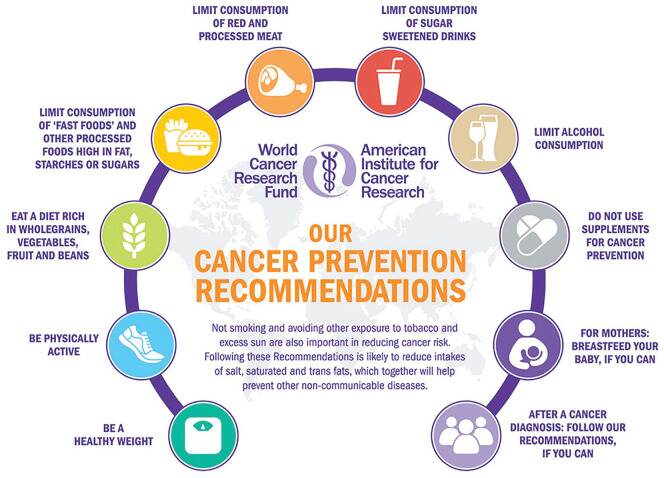
How effective is following these guidelines exactly?
Researchers followed over 50,000 men and women for a little over 15 years. More than 20% developed cancer during this time.42
They found that the more people didn’t follow the guidelines, the higher their risk was to develop cancer. Similarly, the more that people followed these guidelines, the better protected they were. The results were substantial, the researchers stated.
The substantially lower risk was also found in another study that looked at the effect on world’s most common cancer, breast cancer.
The study with over 30,000 women found that women who followed at least 5 of the cancer guideline’s recommendations had a 60% lower chance of getting breast cancer compared to those who followed none of the recommendations.43
7. Cognitive decline:
Most evidence points to benefits of the plant based diet regarding cognitive health via slowing down the development of Alzheimers and Parkinsons. A diet that has been studied in particular is the MIND diet.
It’s a mixture of a Mediterranean diet and the DASH diet which was developed for lowering high blood pressure.
The MIND diet encourages you to eat a lot of green vegetables, berries, beans, nuts, and whole grains, with the occasional addition of some fish or poultry. One should limit red meat, butter, cheese, pastries, and sweets.
Overall, the evidence suggests that the diet is able to either improve cognitive health or slow down any cognitive decline. 44, 45, 46
Unfortunately, we aren’t completely sure how well the diet works for cognitive health. One trial that followed 600 people over 3 years time, couldn’t find a noticeable difference between people on the MIND diet and people on an average diet.47
The problem with this study was that they had both groups reduce their calories which resulted in weight loss.
This could imply that weight loss has a greater impact on cognitive health. Since it’s generally easier to maintain weight on a plant-based diet, it may induce its benefits perhaps more in that way. We can’t be too sure at this moment.
8. Kidney health
NYU School of Medicine came out with a review that emphasized the benefits of a plant-based diet. Researchers reiterated that even small amounts of plant food consumption can have benefits in any stage of kidney disease.48
The authors of another study mention that people with kidney disease often have high blood pressure, an unbalanced lipid profile, and an unhealthy balance of gut microbes. They can all be countered with a plant-based diet.49
A study among the longest and healthiest people on earth shows rather remarkable results:
The people eating more plant-based diets had a 52% lower chance of dying from kidney disease.50

9. Living longer with plants?
Famous for its numerous centenarians (people surpassing the age of 100), Okinawa, Japan, is one of the five blue zones. Blue zones are places where more people reach the age of 100 than anywhere else. Well, the Okinawans used to be healthier, because they, too, have become a victim of westernization.
But even when we compare the healthiest Okinawans, they still have to make way for the number one blue zone, the 7th Day Adventists in Loma Linda, California.
To get back to the question, which one of the four plant-based diets is the healthiest? Is there even such a thing as “the healthiest diet”?
Is it a WFPB diet, a vegan diet, a vegetarian diet, or perhaps a flexitarian diet?
Is there a way to find out?
Let’s take a look at some of the most important data from the Adventist Health Study-2, which provides some interesting information for plant foodies.50
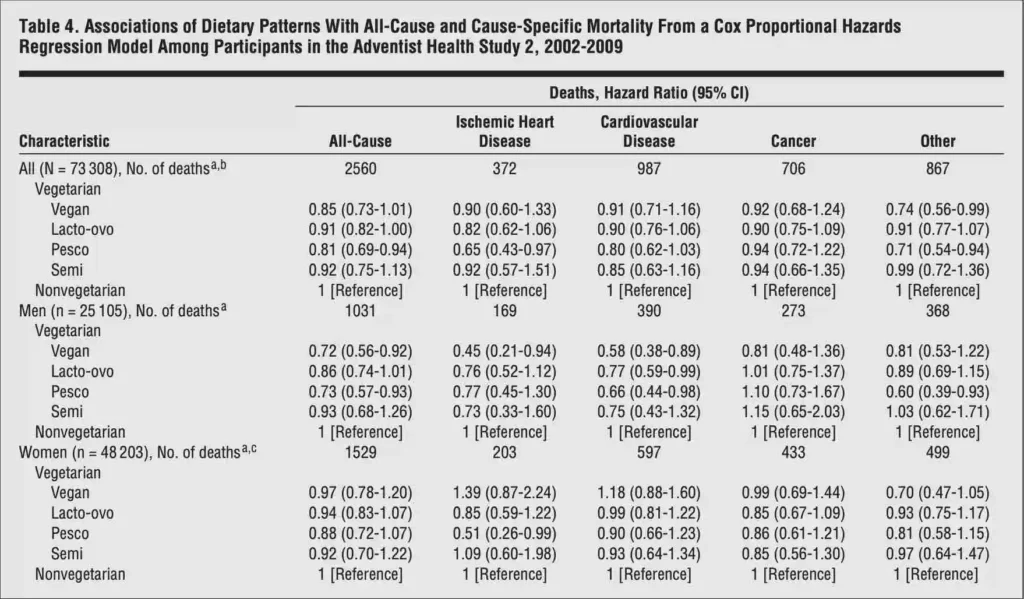
On the left side, you see three sections; All, Men, and Women. They are divided into nonvegetarian, semi (vegetarian), pesco (vegetarian), lacto-ovo (vegetarian), and vegan.
However, the researchers changed the definitions somewhat, so we need to see what they actually mean by them:
- Non-vegetarian = consumed non-fish meats 1 time/month or more and all meats combined (fish included) more than 1 time/week;
- Semi-vegetarian = consumed non-fish meats 1 time/month or more, and all meats combined (fish included) 1 time/month or more but no more than 1 time/week;
- Pesco vegetarian = consumed fish 1 time/month or more but all other meats less than 1 time/month;
- Lacto-ovo vegetarian = consumed eggs/ dairy 1 time/month or more but fish and all other meats less than 1 time/month
- Vegan = consumed eggs/dairy, fish, and all other meats less than 1 time/month.
According to these definitions, the vegans, and vegetarians actually all qualify as flexitarians to a more or lesser extent. After all, flexitarians are “flexible vegetarians.” They normally maintain a vegetarian diet but occasionally make exceptions and eat meat or fish.
But even the non-vegetarians may be classified as flexitarians in some cases, although we don’t have the data to come to clear conclusions. But it’s important to note that they do have a lower meat consumption and a higher quality diet with more whole foods than the average diet.
If you look at the row of non-vegetarians, you’ll find the number “1” followed by “[reference].”
If you look above the 1 [reference], you’ll see other numbers. A number higher than 1 indicates that the group performs worse than the non-vegetarians, and a number lower than 1 indicates better results.
For example, 0.85 is a 15% improvement in comparison to the non-vegetarian reference, and 1.09 is a 9% decline in performance.
Looking at all people combined, both men and women, overall you’ll find that flexitarian diets did better than the non-vegetarian reference group. The all-cause mortality was lower, meaning the chance of dying from any particular cause. The same goes for individual diseases like heart disease, cancer, and other diseases.
Another paradox?
When you look at the men and women sections, you’ll find exceptionally large differences that have not been explained yet. Likely, in the coming years, when follow-up results are published, we’ll have more clarity on this.
This may not seem to match the content of this article, but it’s important to discuss because it may prevent you from falling into some common pitfalls regarding a plant-based diet.
In the study, the effects of plant-based diets on men seem to be much more positive than women. That seems odd because that’s not what the overall evidence shows; the results are mostly similar between the sexes.
The thing that stands out most is the way heart disease impacts women. Men’s risk of dying from heart disease is 55% and 42% (ischemic heart diseases and CVD respectively) LOWER than non-vegetarians whereas for women it’s 39% and 18% HIGHER.
Although the “vegan” women are STILL less likely to die overall than their non-vegetarian counterparts, their risk of dying from heart disease is significantly larger.
Considering the fact that diets between men and women were fairly similar this is even more mysterious. What makes it seem more paradoxical is that among the other blue zones, the Okinawans, the exact opposite happens; women fare significantly better than men when it comes to heart health.51
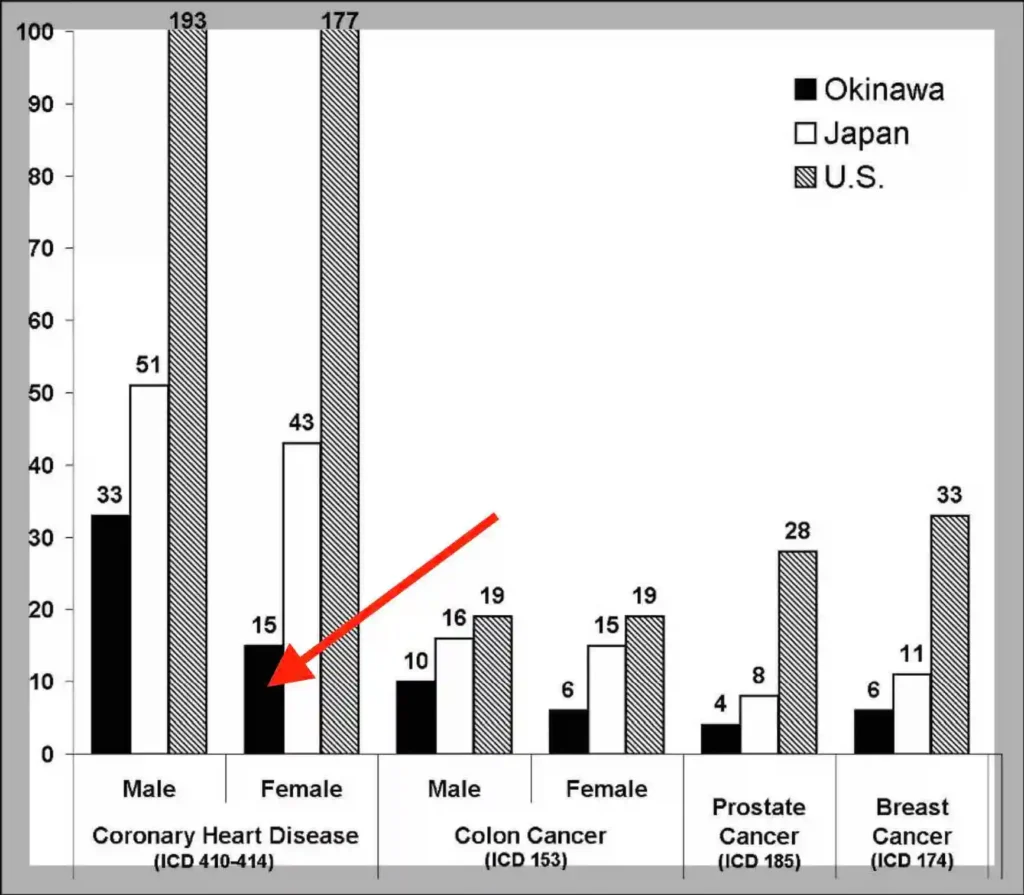
What’s going on here?
When we’re dealing with an apparent paradox, that simply means we’re not seeing all the puzzle pieces. We’re not seeing the exact causes that lead to their corresponding results.
For example, a fire doesn’t just magically happen. Regardless of it being started by a human or by nature itself, there need to be the right causes in place. There needs to be a flammable object, a high enough temperature to ignite that object, and oxygen. How that happens is irrelevant. Fire has no choice in the matter. It’s just the manifestation of the causes that underly it. When causes are in place, the result HAS TO happen.
At this point in time we can only speculate what’s going on, because we can’t see the causes yet. However, there may be a few explanations based on other scientific findings.
Possible explanation 1: Homocysteine
One possible explanation could be that they experience the consequences of a B12 deficiency. B12 is one of the vitamins that can break down a compound called homocysteine.
When B12 levels are low for longer periods of time, homocysteine levels in the blood can rise. Higher levels of homocysteine have been associated with heart disease.52
Part of the reason could be due to a higher LDL, caused by homocysteine, a known risk factor for heart disease as we’ve already discussed earlier.53
I cover the importance of B12 in a later section.
Possible explanation 2: Omega-3
Another possible explanation might be that their omega-3 intake was low. As you can see from the table, the pescatarian women had a significantly LOWER risk of developing heart disease:

It was 49% lower for ischemic heart disease, a much lower risk than even the men who had a lowered risk of 33%.
Remember the Okinawan women?
If you look at the chart below you see that they were by far the most protected against heart disease, including the men.

So what was different then?
The Okinawans did consume some fish and, with it, the essential fatty acids EPA and DHA.
A lack of these fatty acids may increase the risk of heart disease according to one of the latest reviews on this topic.54
But there’s more:
We also know that women can be at an increased risk of developing heart disease after menopause due to hormonal changes.55
Here’s why that matters:
There is some evidence that suggests that omega-3, a precursor of hormones, has positive effects on the regulation of hormones, such as estrogen in the case of menopausal women.
So perhaps that’s why it’s extra important for women to get enough omega-3 in the long run. I’ll cover omega-3 in more detail in the next section.
The key takeaway point is that eating a more plant-based diet certainly has health benefits, but it’s always better to make sure you get enough essential nutrients.
That’s one reason why I’m a proponent of tracking your nutrition for short periods at a time until you get familiar with your nutrient intake. You can make the most informed decisions possible for your health.
I personally use the free online nutrition tracker, Cronometer myself and I find it very easy to use.
The best diet
Even if we were to exclude any paradoxes that seem to be in contrast with overall scientific findings, we can still not conclude what diet is “best.” Even among the men in this study, we cannot come to such conclusions.
What we can say is that incorporating relatively more plant foods is likely to be a healthy choice as populations that live longer and healthier lives all have diets that consist of mostly plant-based foods.
We can’t say whether or not it’s better to eat plant foods exclusively. Neither can we say it’s not (even assuming one’s nutritional requirements are all fulfilled).
I speak more on B12 and omega-3 in the section: 5 Essential Nutrients to Focus on in a Plant-Based Diet.
Bottom Line:
In summary, the totality of evidence points to the numerous health benefits of a plant based diet. From reducing the risk of cardiovascular disease, cancer, diabetes, kidney disease, and high blood pressure, to improving the immune system, cognitive health (directly or indirectly via weight loss) and increasing longevity.
However:
It’s crucial not to overlook important nutrients, such as B12 and omega-3 fatty acids.
Environmental Impact
By adopting a plant-based diet, you’ll also contribute to a more sustainable food system. Animal agriculture is a significant contributor to deforestation and requires vast amounts of land and water.
Eating one-fifth less beef could halve deforestation
One study pointed out some alarming numbers regarding deforestation:56
- 80% of deforestation is in the Amazon.
- Livestock and their feed use 83% of farmland but contribute only 18% of human calories.
- This land clearing harms wildlife habitats and global biodiversity.
According to their calculations, if people were to eat 20% less beef, which is not unrealistic, we could cut deforestation in half. Replacing beef with plant-based alternatives could achieve this in 30 years.
A clear summary of the study can be found here.
The Food and Agriculture Organization of the United Nations (FAO), comes to a similar conclusion. They add that most of the land is used for soy and palm production which is used as livestock feed.
They also state that 33 percent of the total arable land on this planet is dedicated to producing crops for livestock. In all, livestock production accounts for 70 percent of all agricultural land. These are shocking numbers.
Eating plants decreases your water footprint
The massive numbers of livestock also lead to tons of water being used every single day, because meat production requires a lot of water for irrigation, raising animals, and processing.
But to grow plants you also need water. So how do they compare?
As you can see in the chart, the water footprint of meat-based foods is much higher than the water footprint of plant-based foods.
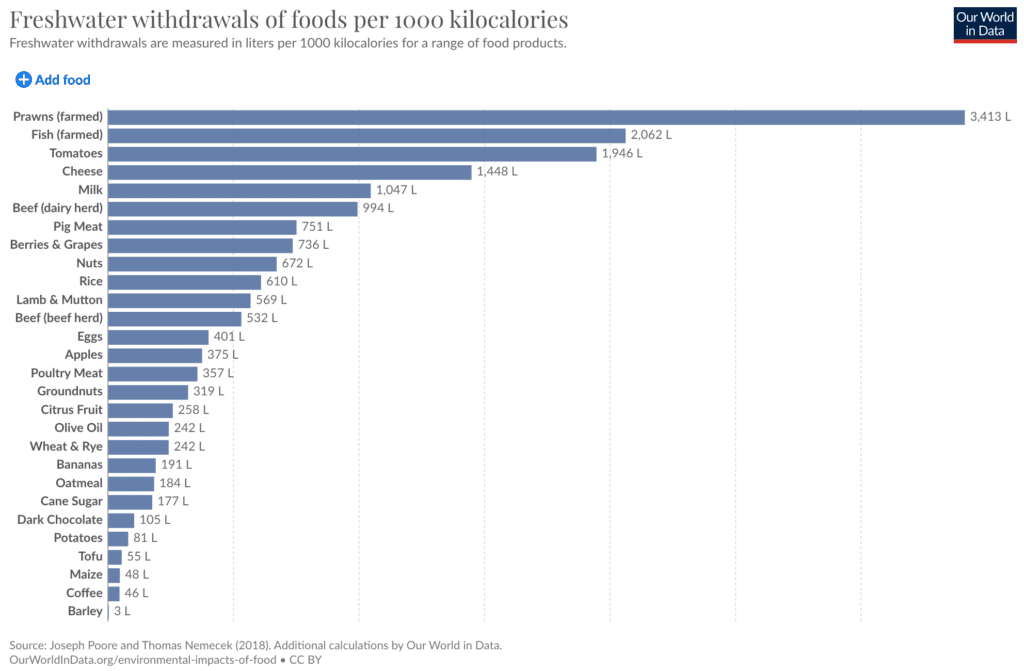
To be fair, not all plant foods are equally great. Some nuts require a lot of water usage, especially almonds. If you care about reducing your water footprint, you should consume at least almonds sparingly.
Having said that, you can’t just base your opinion on the order of items listed here. That’s because the water usage for each item is based on the same energy they supply.
For example, for every 1,000 kcal of tomatoes, almost 2,000 liters of water is used. Since tomatoes are very low in calories and you don’t eat as much tomato as you would, let’s say, steak, it’s not a fair comparison.
So, let’s use average serving sizes to single out a few plant foods that seem to use up a lot of water and see where they stand.
I’m going to use Cronometer for this. As a comparison, I’ll use a few common animal products on the list as well such as beef and milk.
To be as accurate as possible, I’m going to take the average fat content of beef since the whole cow was used to come to these calculations.
I’m also going to use whole milk – low-fat milk would be less accurate since the fat is removed after milking. It is an inherent part of the milk before milking.
I’ll also use a plant food (oats) that requires an average amount of water as another comparison.
- Ground beef (grass-fed): a 3 oz./85 g serving of ground beef supplies 168 kcal.
1,000 kcal of tomato requires 994 L
1,000 kcal / 168/230 kcal = 5.95
994 L/ 5.95/4.34 = 167 L - Milk: one serving of whole milk equals 148 kcal.
1,000 kcal of tomato requires 1,047 L
1,000 kcal / 22 kcal = 6.75.
1,047 L/ 6.75 = 155 L - Tomato: one serving of tomato (a medium tomato) supplies about 22k cal.
1,000 kcal of tomato requires 1,946 L
1,000 kcal / 22 kcal = 45.5.
1,946 L/ 45.5 = 42.7 L - Nuts: a 1 oz./28 g serving of mixed nuts supplies 174 kcal.
1,000 kcal of nuts requires 672 L
1,000 kcal / 174 = 5.74.
672 L / 5.74 = 117 L - Berries: a cup of mixed berries supplies about 70 kcal.
1,000 kcal of berries requires 736 L.
1,000 kcal / 70 kcal = 14.29.
736 L/ 14.29 = 51.5 L - Rice: one cup of cooked brown rice supplies 218 kcal.
1,000 kcal of rice requires 610 L
1,000 kcal / 218 kcal = 4.58.
610 L/ 4.58 = 133 L - Oats: one serving of oats supplies 170 kcal.
1,000 kcal of oats requires 184 L
1,000 kcal / 170 kcal = 5.88.
184 L/ 5.88 = 31 L
As you can see, tomatoes don’t look as bad as before. A serving of tomato uses up less water than even a serving of berries.
Nuts require a lot of water even for a single serving. Since almonds use the most water, the number for other nuts may be slightly lower than the 117 liters.
Although rice requires less water than beef and milk, compared to oats it’s like a sponge.
Nowadays, there are techniques to decrease the water usage for rice by up to 64%,57 but I don’t have any knowledge about the current advancements and whether these techniques have become more widespread. The number may end up significantly lower but it will never compare to other grains.
To produce food, you require land
Some foods require more land than others. Beef, for example, requires vast amounts of land, hence the deforestation issues we face on a global scale. As you can see from the chart, most plant foods don’t require as much land as animal-based foods.
An exception is cacao beans, mostly used for chocolate production. They are the worst plant food in terms of the space they require.

Note that this list is based on kilogram (2.2 lb). Just as with the previous examples of water, we need to see this list from the right perspective:
A serving of pork (3 oz./85 g) is 4 times heavier than the coffee beans needed for a large Starbucks coffee (~20 g). So, pork requires much more land in comparison. Therefore, it wouldn’t be fair to compare 17.36 m2 that is used to produce 1 kg of pork versus 21.62 m2 used to produce 1 kg of coffee beans.
Related article: Five Amazing Health Benefits of Coffee.
Bottom Line:
Choosing plant-based options helps preserve the environment for future generations. Overall, they require significantly less water and land than animal-based foods.
However:
Take into account that some plants do require relative more water, such as rice and nuts. Cacao beans require more land than any other plant food.
5 Essential Nutrients to Focus on in a Plant-Based Diet
A well-planned plant-based diet can provide all the essential nutrients your body needs. However, there are a few nutrients that require special attention. Here are some key nutrients to focus on when following a plant-based diet:
1. Protein:
For most of us, it’s going to be quite challenging NOT to get enough protein on a plant-based diet. If you eat plenty of plant foods and get in enough energy, you won’t have to be concerned with protein.
That said, protein is often a point of concern and we therefore include it here.
Plant-based diet protein sources include legumes (beans, lentils, chickpeas), tofu, tempeh, seitan, grains (such as oats, barley, and wheat), and pseudograins (in particular amaranth, quinoa, teff, and buckwheat.
It’s important to include a variety of these protein-rich foods in your meals to ensure you’re meeting your caloric and protein needs.
Do you need protein powder on a 100% plant-based diet?
As long as you’re getting enough calories and incorporating protein-rich plant foods into your diet, you won’t need protein powder, whether it’s plant-based or animal-based.
However, there are situations where it can come in handy, especially for athletes with higher protein needs or anyone with tight schedules who can’t sit down for a full meal. I talk more about that here and also discuss what are the safest protein powders to consume.
2. Iron:
Plant-based sources of iron include dark leafy greens (spinach, kale), legumes, whole grain and fortified cereals, and nuts/seeds. Pairing iron-rich foods with vitamin C-rich foods (citrus fruits, bell peppers) can enhance iron absorption.
A true superstar that contains both vitamin C and iron is broccoli. Other leafy greens also contain both, and another honorary mention goes out to sweet potato.
Related article: 8 Fun Sweet Potato Nutrition Facts You Didn’t Know
3. Calcium:
While dairy products are the most common source of calcium, there are plenty of plant-based alternatives. Soybeans are naturally rich in calcium, so that includes tofu, tempeh, and soy milk. Sesame seeds (tahini) and chia seeds are also potent sources of plant-based calcium.
Dark-leafy grains contain plenty of calcium, in particular kale and mustard greens. Spinach contains a lot of calcium, but most of it gets bound with oxalates in the digestive system.
WARNING:
It is so incredibly high in oxalates, that I’d be careful with consuming spinach more than once or twice a week. The same goes for beet greens and Swiss chard. The high amount of oxalates can cause several health issues over the long term, and increase the development of kidney stones.
Harvard cohort studies found that men and women who ate spinach eight or more times a month had a 30% higher risk of developing kidney stones.58
Dr. Michael Greger from nutritionfacts.org has made a great informational video on this topic.
I’ve seen people who get all enthusiastic and make themselves a green smoothie every day but then end up with a spinach-based smoothie a large number of times. This is bound to get you into trouble in the long run.
One trick you could apply when making a spinach smoothie:
Boil the greens and then cool them under running water before adding them to your blender. This will reduce oxalate content by approximately 30%, and it makes the flavor of the smoothie milder as well.
4. Vitamin B12:
Vitamin B12 is primarily found in animal products, so it’s important for those following a plant-based diet to supplement or consume fortified foods such as plant milks, cereals, or nutritional yeast. Note that B12 is a global issue as practically all livestock gets supplemented with B12 as well. We shouldn’t underestimate it because B12 is crucial to your nervous system.
When transitioning to a more plant-based diet, your B12 stock will slowly deplete unless you maintain a good B12 intake. For some people that stock may keep them healthy for many months while for others it may be only weeks. You should never wait and see. The risks are not worth it.
A common early symptom of a B12 deficiency is when your hands start tingling. According to Cleveland Clinic you may also feel more tired and irritable than usual, experience a loss of appetite, and tend to forget things more easily.
5. Omega-3 fatty acids:
Omega-3 fatty acids are essential fatty acids that are important for heart health, brain health, and other functions. They are found in fish, but they can also be found in plant-based sources such as flaxseeds, chia seeds, and walnuts. Although walnuts are a healthy source of omega-3, the purported benefits on brain health are questionable. However, the evidence for improved heart health is stronger.
If you are following a plant-based diet, it is important to consume enough omega-3 fatty acids. You can do this by eating flaxseeds, chia seeds, walnuts, or by taking a supplement.
If you take a supplement, I recommend taking an algae-based supplement. Even if you don’t mind consuming fish oil, I’d still opt for an algae-based one considering it’s a much safer source in general because it doesn’t face the same contaminant issues as fish oil commonly does.59
Since plant-based foods such as walnuts, chia seeds, flax seeds, etc., don’t contain the essential DHA and EPA, the body must convert the omega-3 ALA into DHA and EPA. Our body is not hyper-efficient at doing that. To stay on the safe side, I recommend taking 1.5 – 3 tablespoons of ground flax seeds. That would result in 2.2 – 4.4 g of ALA which some researchers suggest is enough to counter potential conversion issues.60
This is also what I recommend in my book.
Like many common foods, flax seeds naturally contain some amount of cyanide and some people are therefore concerned with a possible cyanide poisoning. There’s no evidence that this quantity is anywhere near toxic. The poison is in the dose.61
On top of that, cooking lowers the cyanide content and even soaking for longer periods of time, such as when you make overnight oats for example, lowers it. Another way is to grind flax seeds not too finely since that releases the cyanide relatively more.62
If you’re still concerned, you could also replace part of the flax seeds with chia seeds or simply take a tablespoon of flax seed oil that doesn’t contain cyanide. If you’re going to use chia seeds, do note that our bodies cannot absorb the ALA efficiently from whole chia seeds (similar to whole flax seeds).
Be aware of the following, though:
Flax seeds are an amazing super food and have been shown to be able to kill off various breast cancer and prostate cancer cells in cancer patients.63, 64
On top of that, these anti-inflammatory seeds also are potent at lowering blood pressure.65
So it would be beneficial to get at the very least 1 tablespoon into your daily diet. That happens to be nutrtionfacts.org’s Dr. Greger’s recommended dose.
Bottom Line:
By focusing on a diverse range of plant-based foods and paying attention to these essential nutrients, you can ensure a well-rounded and nourishing diet.
An easy way to check whether you’re getting enough iron, B12, omega-3, and calcium would be to use a nutrition tracker such as Cronometer.
How to Start a Plant-Based Diet for Beginners?
6 Tips to Transition
Transitioning to a plant-based diet doesn’t have to be overwhelming. Here are some practical tips to help you make a smooth transition:
1. Start gradually
What is the easiest way to start a plant-based diet?
There are two general ways to implement change. You could begin by incorporating more plant-based meals into your diet and gradually reduce your consumption of animal products. This approach allows your taste buds and digestive system to adjust to the change. But you’re not limited to this approach.
You could also simply add more plant-based foods to your existing meals. For example, let’s say you wish to reduce your meat intake. You could reduce the portion size of the meat and add more plant foods instead.
The secret to success here is this:
Make it really easy for yourself.
Why?
On the days when you have no motivation, you will still be able to implement your change. If that entails only changing one single meal, then so be it. Keep doing this until it becomes a habit. Then you won’t have to worry anymore about motivation because you’ll do it on autopilot.
2. Experiment with new plant-based diet recipes
Explore the world of plant-based cooking by trying out new recipes and experimenting with different flavors and ingredients. There are countless online resources, cookbooks, and food blogs dedicated to plant-based cooking that can inspire you. I will list some of my favorite resources in a moment, and you can find many easy plant-based recipes for beginners in the section: A 7-Day Meal Plan: Delicious Plant-Based Diet Recipes for Beginners.
3. Plan your meals
Meal planning can make the transition easier and save you time and effort. Set aside some time each week to plan your meals, make a grocery list, and prep ingredients in advance.
This will help you stay organized and ensure you have nutritious plant-based options readily available. This becomes much easier when you have an arsenal of recipes at your disposal. If you have a few staple recipes (like I have for breakfast), it becomes even easier.
4. Seek support
Connect with like-minded individuals who are also on a plant-based journey. Join online communities, attend local events, or find a plant-based buddy to share experiences, tips, and recipes with. Having a support system can make the transition more enjoyable and sustainable. There are various places to find like-minded people.
Here are some communities where you could start. Choose the ones that most align with your own values. For example, vegan communities have different mindsets than many other people who simply wish to eat more plant foods for health.
- https://www.reddit.com/r/PlantBasedDiet/
- https://www.quora.com/topic/Plant-Based-Diet
- https://www.meetup.com/topics/plant-based/
- https://www.facebook.com/groups/WholeFoodPlantBasedDiet
This is a private group, so you’ll have to make a request to enter first.
The group is quite active and members regularly post recipes and share their thoughts and experiences. - https://nutritionfacts.org
Nutritionfacts.org is an amazing resource with tons of nutrition and health-related videos based on the latest science. The majority of its content is video-oriented, and it boasts an engaged community actively contributing comments and discussions below the posted videos.
Due note that this is a community of people who mostly follow a Whole Food Plant-Based (WFPB) lifestyle and is focused on the scientific evidence behind it. It is not the most appropriate place to discuss recipes that divert from that. - Brownble.com
Brownble has tons of incredible content for plant-based enthusiasts, both free and paid.
But what really makes them special is how inclusive, supportive, and understanding they are. Kim, an accredited plant-based vegan chef, goes out of her way to help everyone, no matter if you’re a paying member or not. She only shares plant-based recipes, but her door is open to everyone without any judgment.
That’s why I chose to partner with them, and I do earn a commission on products you buy through the links I provide. Now, I have tried both their free and paid content, and it’s impressive what they offer. I personally keep their products on my gift list whenever I meet someone who is interested in a more plant-based lifestyle.
- The support section in their main course, The Roadmap, is particularly helpful. They provide practical tips on meal planning, budget-friendly choices, dealing with common challenges, handling social situations, and even staying plant-based while traveling. Needless to say, there are plenty of recipes as well delivered in a step-by-step video guide. It’s a treasure trove of resources for a plant-based lifestyle.
- Their membership Program offers an abundance of well-organized video recipes (hundreds!), along with plenty of practical kitchen tips. Additionally, they keep you regularly updated with new recipes and useful content every week.
- You can try their main course and program for free and see whether it’s a good fit for you. They offer some massive discounts on combination purchases.
- The support section in their main course, The Roadmap, is particularly helpful. They provide practical tips on meal planning, budget-friendly choices, dealing with common challenges, handling social situations, and even staying plant-based while traveling. Needless to say, there are plenty of recipes as well delivered in a step-by-step video guide. It’s a treasure trove of resources for a plant-based lifestyle.
If I know someone is relatively more interested in recipes, I will gift the membership Program. If they value practical support relatively more, I will gift The Roadmap.
Here’s how other people feel about it:
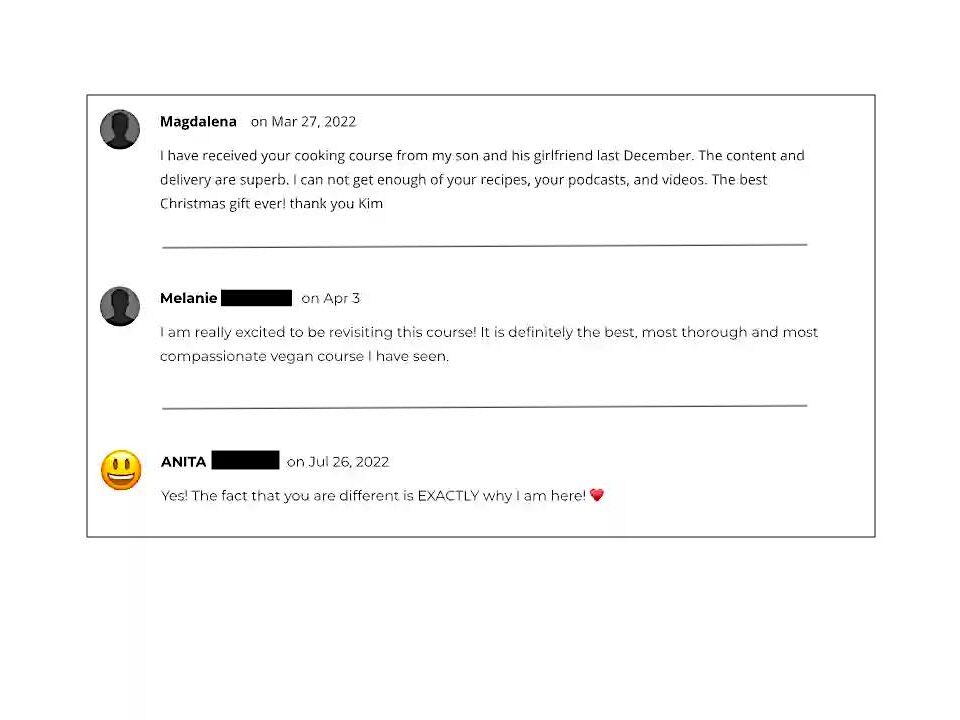
5. Be mindful of nutrient intake
Pay attention to your nutrient intake, especially in the initial stages of transitioning. You could consider consulting with a registered dietitian who specializes in plant-based nutrition to ensure you’re meeting your nutritional needs.
If you are motivated to do it by yourself I recommend the online nutrition tracker Cronometer. I know I keep mentioning this tool because it’s just so convenient. It has been my sidekick for many years.
It’s a great tool for anyone who wants to make informed choices and wants to know whether their diet supplies them with all the essential nutrients. Once you get more familiar with your nutrient intake, you won’t have to use the app necessarily anymore.
6. Drink enough water
Unless you’re only going to eat refined plant foods (please don’t), you’re bound to increase your fiber intake. With extra fiber comes the need for the body to drink more water. The Institute of Medicine (IOM) recommends a total water intake from all foods and liquids at 3.7 liters (125 ounces) for men and 2.7 liters (91 ounces) for women.
Since 1 L of water is about 4.2 cups, we’re talking about 15.5 cups for men and 11.5 cups for women. Of course, it is not as simple as that. This doesn’t take into account the differences in body composition, physical activity, climate, and any medical conditions. Physical activity and hot weather strongly affect your need to drink more water.
On the other hand, some medical conditions require you to limit your intake. To find out what’s your total water intake in a day is actually remarkably easy if you use a nutrition tracker.
Just input all your food and drinks and you’ll get the total amount of water.
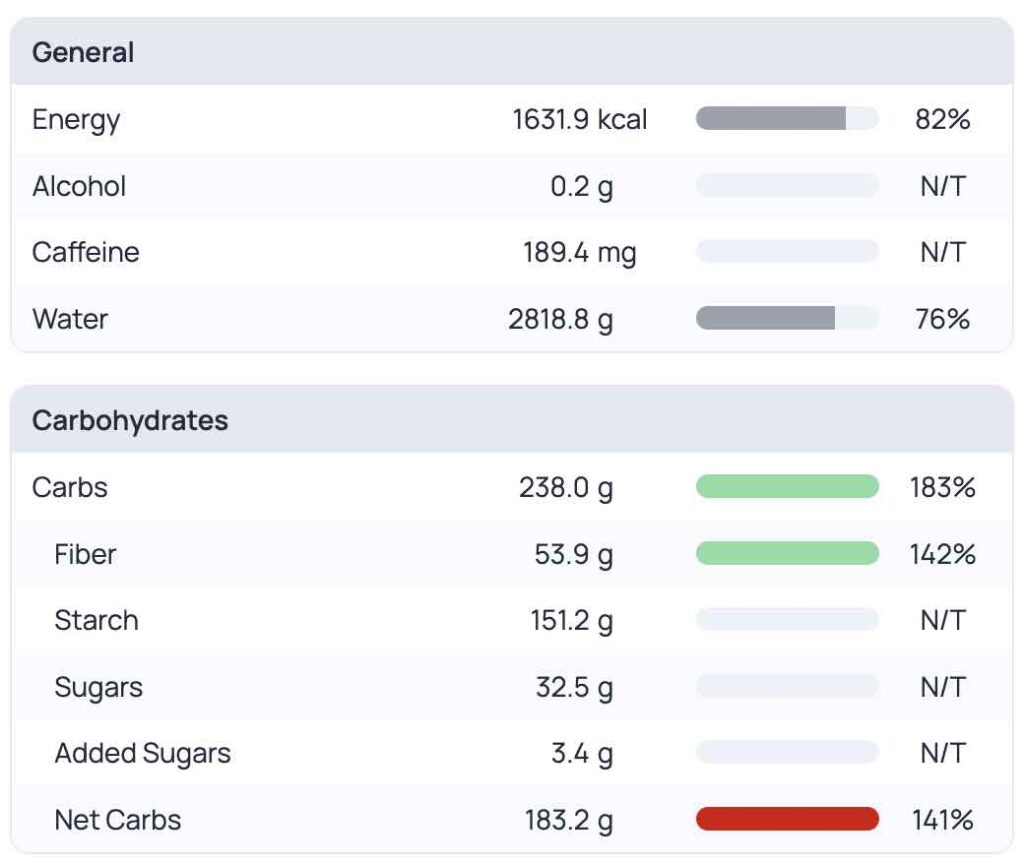
What if you don’t want to calculate?
On average, according to Harvard Medical School, you’d need about 4 to 6 cups of plain water, depending on other fluid sources you consume such as coffee, tea, juice, fruits, and vegetables.
Although exact science is lacking, generally speaking, it is recommended to add about a cup of water to every 10 grams of fiber increase.
This is not something you must follow to the T or else you’re going to shrivel up due to dehydration. But it is a good indication that you may need to increase your water intake as you start eating more plant foods.
This is especially so if you also become more physically active, and when you start getting less regular. If anything, you should become more regular. Enough fluids will help with that.
Finally, when you start passing the age of 60, your sense of thirst starts changing. Water reserves are lower but aren’t adequately picked up by the body. So as we get older we need to make extra sure to drink more regularly.66
Especially when eating more plant-based.
Last, but definitely not least, the importance of staying hydrated may also lower your risk of dying from heart disease.67
Bottom Line:
Remember, the transition to a plant-based diet is a personal journey, and it’s okay to take it at your own pace. Celebrate small victories and be kind to yourself throughout the process.
Find like-minded people and get inspired by new recipes. Finally, be mindful of your nutrient and water intake so that you give your body all that it needs.
9 Food Groups to Avoid or Minimize on a Healthy Plant-Based Diet
We’ve discussed the different types of plant-based diets. Although they are different, a healthy diet that is centered around plant foods should not rely on any of the following items of food:
1. Artificial sweeteners:
Aspartame (Equal, Nutrasweet), Saccharin (Sweet’N Low, Sweet Twin, Necta Sweet) Sucralose (Splenda), Acesulfame potassium (Sunett, Sweet One), Neotame, Advantame, Cyclamate (Banned in the U.S. but still available in some other countries). Steviol glycosides better known as Stevia and Monk fruit extract are considered natural sweeteners and better options than artificial sweeteners.
Although that may be so, that doesn’t mean they are good for you.
For example, they face a similar problem as artificial sweeteners.
In a study where participants had to drink a beverage sweetened with sugar followed by lunch an hour later, the blood sugar spiked after the sugar water but came down after lunch.68
On the other hand, when they drank aspartame-, monk fruit-, stevia-, and sucrose, their blood sugar stayed low after an hour, but spiked much higher after lunch than the sugar group because one tended to eat more.
Stevia may have harmful effects on our friendly gut flora,69 so it’s advisable not to make it a staple in your diet long-term.
2. Fast food:
French fries, hamburgers, hot dogs, chicken nuggets, pizza, sausage, mac and cheese, chips/crisps, etc. All of these include vegan options as well and they are also included.
3. Added sugars and sweets:
Table sugar, fruit drinks, soda, pastries, cookies, sweets and candy, tea or coffee with added sugar, cereals with added sugar, etc.
Fruit drinks and fruit juices are not the same. Fruit drinks have added sugar whereas fruit juice does not. Some juice also contains some of the original fiber content. For these reasons, juice is always a better option. However, the whole fruit is always the best option.
4. Refined grains:
White rice, white pasta, white bread, instant noodles, many instant cereals such as Cheerios, Frosted Flakes, and most cornflakes. (plain instant oatmeal is not a refined grain). Many baked goods are refined too such as plain bagels, french bread, etc.
5. Packaged and convenience foods:
Chips, crackers, energy bars with added sugar (not whole food energy bars), etc.
6. Refined vegan-friendly foods:
Plant-based meat and plant-based cheese, etc. There are more and less refined versions, though. A cheese based on fermented cashews is not comparable to a cheese that is based on coconut oil.
Nut cheese actually classifies as a whole food and it’s a very digestable way to eat nutritious nuts. Plus, it has added beneficial bacteria on top of it all. There are also cheeses made from soy which hold healthy legume properties. Some of the other cheeses are made from starches such as tapioca, and are not much more than refined carbohydrates.
7. Animal products:
Flexitarians and vegetarians may still consume some animal products. As we’ve talked about in the section of health benefits, it’s not possible to say what diet is absolute best. We do know that minimal consumption of animal products has shown more benefits. Not all animal products are created equal, though.
If you still consume some animal products, try to avoid the fattier ones and opt for lean as much as possible. Avoid products such as lard, tallow, and butter as they are the fattiest.
8. Processed animal products:
Bacon, lunch meats, beef jerky, fish jerky, etc. Of course, this applies only to a flexitarian who still consumes some meat. However, there are vegan options out there as well. They may not be as harmful, but that doesn’t mean they can be considered healthy. Usually, they are highly processed and contain excess salt.
9. Palm oil and coconut oil:
Although vegetable oils can be included in a plant-based diet (but not in a WFPB diet), palm oil and coconut oil are outliers. They both raise your LDL, and therefore increase your risk of CVD (cardiovascular disease). So, I don‘t recommend either of them to be a staple in your diet.70, 71, 72, 73
It would be helpful if you knew the difference between coconut oil, coconut milk, coconut water, coconut flour, and fresh or dried (shredded) coconut.
- Coconut oil is pure fat and is often touted as a health food. That is not what science shows us as mentioned above.
- Coconut milk is coconut pressed through a strain through which only water and fat can go. It is not as bad as coconut oil since it’s fat and water, so it’s less concentrated. That doesn’t mean it’s healthy.
- Coconut water is the water that’s naturally contained within a coconut. It comes with a variety of minerals, especially potassium. However, it also comes with plenty of carbs, so I wouldn’t recommend drinking it throughout the day.
- Coconut flour is a more concentrated form of coconut, very low in fat and lower in carbs than dried coconut, and has a higher fiber content. It’s a good low-carb flour alternative in baking.
- Fresh or dried coconut is the complete package. It contains not just the fat but also plenty of fiber. Unlike coconut oil, it seems that coconut doesn’t significantly affect cholesterol, though science is limited.74
Bottom Line:
For a healthy plant-based diet, it’s better to minimize highly processed and refined foods. It’s alright to use them sparingly, but better not rely on them too much or use them as a staple.
6 Plant-Based Diet Meal Planning and Grocery Shopping Tips
Effective meal planning and strategic grocery shopping are key to maintaining a plant-based diet. Here are some tips to help you stay organized and well-stocked:
1. Plan your meals:
Take some time each week to plan your meals and create a shopping list. Consider incorporating a variety of the following foods so that you can plan balanced meals that include protein, carbohydrates, and healthy fats:
- Fruit: bananas, berries (strawberries, blueberries, raspberries), citrus fruits (oranges, grapefruits, lemons), melon (watermelon, cantaloupe), pears, peaches, pineapple, apples, grapes, kiwi, etc. Prefer fresh fruit first, frozen second, and packaged last.
Fruits like berries are often convenient and affordable in frozen form. Since they are one of the healthiest fruits, don’t shy away from stocking up frozen berries. - Vegetables: asparagus, broccoli, carrots, cauliflower, kale, peppers (bell peppers), leafy greens, tomatoes, zucchini, cucumbers, eggplant, etc.
Related article: 6 Amazing Health Benefits of Broccoli - Starchy vegetables: butternut squash, potatoes (sweet potatoes, white potatoes), pumpkin, beets, turnips, cassava, yams, etc.
- Whole grains: barley, whole grain rice (brown, red, black, or purple rice), oats (rolled oats, steel-cut oats > instant oats)*, quinoa, whole grain bread, millet, buckwheat, teff, farro, and pasta made from any of these.
*Instant oats have been more processed and have lost some of their nutrition. That said, it’s still a good option if you don’t have the time (or tools) to cook whole or steal-cut oats. Instant oats are also easy to blend into a smoothie. - Legumes: black beans, adzuki beans, chickpeas (garbanzo beans), peas, red kidney beans, navy beans, lentils, mung beans, edamame, etc.

- Other plant-based protein sources: legume-based protein such as pea protein, (black bean) tofu or tofu skin, tempeh, seitan
- Healthy fats: avocados, olives, olive oil, nuts and seeds. The most suitable cooking oils are high in monounsaturated fats (MUFA), e.g., olive oil and canola oil (organic, non-GMO). Extra virgin olive oil is not suitable for high-temperature cooking because of its low smoking point. Other types of olive oil or Canola would be better options under these circumstances.
Regardless, it would be better to rely on low or moderate-temperature cooking, because this method creates fewer harmful and cancerous compounds.75 - Seeds, nuts and nut butters: almonds, cashews, chia seeds, flaxseeds, hemp seeds, natural peanut butter, sunflower seeds, pecans, walnuts, etc.
- Unsweetened plant-based milks: almond milk, cashew milk, flax milk, oat milk, soy milk, etc.
- Spices, herbs and seasonings: basil, black pepper, white pepper, curry powder, rosemary, oregano, salt, turmeric, cumin, paprika, cinnamon, etc.
- Condiments: mustard, nutritional yeast, salsa, soy sauce, vinegar, tahini, hot sauce.
- Drinks: Water, coffee, tea (matcha, green tea, black tea, oolong tea, etc.), herbal tea, rooibos tea, sparkling water, etc.
Related article: Matcha Tea: 5 Incredible Health Benefits
If you’re drinking any type of matcha tea, please make sure it comes from a safe source.
2. Stock your pantry:
Keep your pantry well-stocked with staple ingredients such as whole grains (such as rice, quinoa, oats), legumes (beans, lentils), canned tomatoes, spices, and condiments.
Having these essentials on hand will make it easier to whip up quick and nutritious plant-based meals, even on the fly!
3. Have healthy snacks on standby
In your journey towards a plant-based diet, it’s crucial to be prepared for those moments of hunger between meals. Stock up on convenient and nutritious options like crunchy beans, dried fruits (without added sugar), trail mix, a variety of nuts, or different types of whole grain wafers/crackers.
These wholesome snacks not only curb your cravings but also provide essential nutrients and healthy calories. Keep them in your pantry, desk drawer, or your bag for easy access wherever you are.
By having these plant-powered snacks at the ready, you’ll stay on track with your healthy eating plan and make the transition to a plant-based lifestyle smoother.
4. Shop the perimeter:
When grocery shopping, focus on the fresh produce section, as well as the bulk bins for grains, legumes, and nuts.* These areas typically offer a wide variety of plant-based options.
Avoid spending too much time in the processed food aisles! And never go shopping while you’re hungry. People tend to make unwise choices during those times.
*When you buy nuts in bulk, make sure that you buy them as fresh as possible. You can do that by checking the manufacturing or expiration date on the package. If nuts smell off, it’s better not to eat them. Preferably store them in a dark and cool place to slow down the oxidation of the fats.
When fats come in contact with light, oxygen, or warm temperatures, the fat molecules undergo a change we call oxidation. It leads to the production of free radicals which are harmful. The rancid smell nuts can have is a product of oxidation.
5. Read labels:
When purchasing packaged foods, read the ingredient labels carefully. Look for products that are minimally processed, free of artificial additives, and derived from plant sources. If you’re a vegan or transitioning to a vegan diet, keep an eye out for hidden animal-derived ingredients, such as casein, whey, or gelatin. Here’s a complete list of non-vegan food additives.
An absolute must-know for anyone who occasionally buys packaged or processed foods:
In places like the United States, Canada, and the European Union, ingredients are listed in order of weight, from most to least. This means that the first ingredient is the one that makes up most of the food, and the last ingredient is the one that makes up the least.
There are a few exceptions to this rule. For example, flavorings and spices can be listed in any order, as long as they are all grouped together. Ingredients that are present in very small amounts, such as vitamins and minerals, can be listed in alphabetical order.
But in general, the first ingredient is the most important one. So, if you’re looking for a food that is low in sugar, you should look for one where sugar is not one of the first ingredients listed.
For example, if you’re looking for a cereal that is low in sugar, ideally sugar should be listed as one of the last ingredients. That said, a package that contains 100% cereal is usually the best option.
It’s easy to flavor by adding natural sweeteners such as (dried) fruit, unsweetened coconut flakes, or potassium-rich coconut water.
Wheat is frequently used in various packaged foods. So it’s helpful to know the following:
When you come across terms like “flour,” “wheat,” or any phrasing that doesn’t include “whole,” it’s a sign that the wheat has gone through some level of refinement. The least refined form is known as “cracked wheat.”
However, it’s best to actively seek out terms like “whole wheat,” “whole wheat flour,” or “whole grain.” These phrases indicate that you’re getting the wheat in a more natural and nutritious state.
The chocolate bar comparison
It’s not always as clear-cut. To explain that we need to take added sugar into the equation. Let’s use a visual example of two kinds of chocolate bars:


The bar on the left first lists cacao mass and cacao butter (chocolate liquor), and then milk, sugar, and more cacao butter, plus a few minor ingredients.
The bar on the right also lists chocolate liquor first, and then mainly sugar.
Besides the milk, it doesn’t show a whole lot of difference. Yet, there’s a clear difference in the amount of cacao mass the bars contain; 88% versus 48%.
Here is where we have to look at the other part of the label:
Sugars.
The part we are particularly interested in is “added sugar,” which isn’t part of the food itself. As we can see the milk chocolate has 7 g of added sugar per 1 oz serving (28 g), and the dark chocolate on the right has 3 g. That’s a big difference!
Most of the time the distinction is a bit more clear. We can see that from milk chocolate that has less cacao mass (35%):

You can see, this one has sugar listed as the number 1 ingredient which is also reflected in the added sugar content of 16 g.
6. Experiment with new ingredients:
Don’t be afraid to try new ingredients and expand your culinary horizons. Incorporate a variety of fruits, vegetables, whole grains, and plant-based proteins into your meals to keep things interesting and flavorful.
7. Plant-based meal delivery
There are those times when life gets busier than usual, and meal planning feels like a distant dream. Or maybe you’re simply craving a break from cooking. That’s where a reliable, high-quality plant-based meal delivery service can help save the day, offering a flexible, stress-free backup for your plant-based meals.
Just type “plant-based meal delivery near me” into your search engine, and you’ll find a range of options. Here are some tips for selecting the right one:
- Ensure they offer a diverse menu and emphasize healthy whole food plant options.
- Look for services that accommodate specific dietary needs like diabetes, gluten intolerance, allergies, vegan, vegetarian, etc.
- Opt for flexibility; choose services that allow you to customize your weekly meal plans by swapping out dishes.
If you’re in the U.S., one option worth considering that fits all the criteria above is
Vegin’ Out.
However, for those located elsewhere, there’s a plethora of plant-based meal delivery services available nowadays in many countries. So, whether you’re in a rush or simply looking to treat yourself, these services can be a real lifesaver.
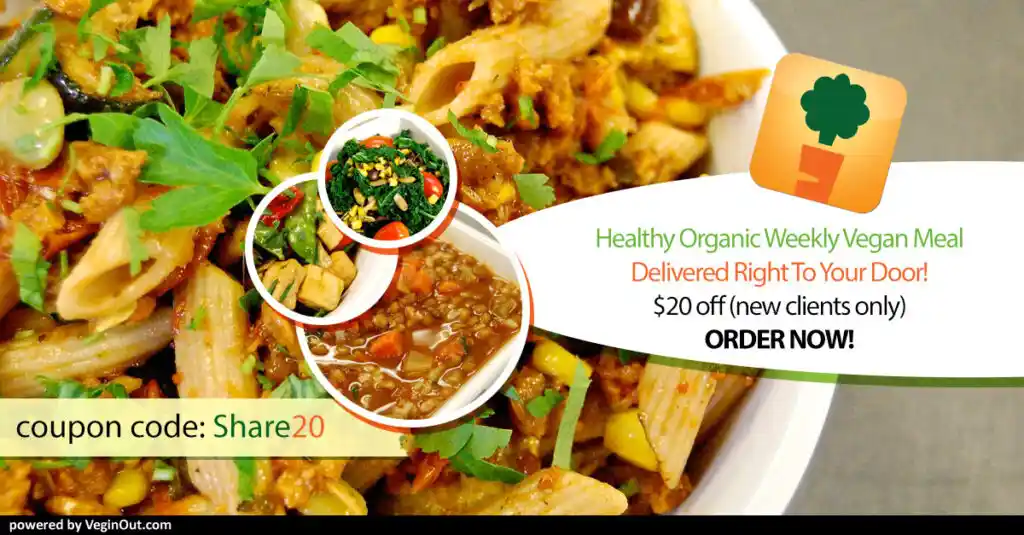
Bottom Line:
By planning your meals and shopping strategically, you’ll be well-prepared to nourish your body with delicious and nutritious plant-based foods. Make it a habit of checking the labels of packaged foods and see what the first few ingredients are.
Be curious and open-minded about foods you perhaps haven’t tried. A vast world of plant-based nutrition awaits you!
A 7-Day Meal Plan: Delicious Plant-Based Diet Recipes for Beginners
Looking for some beginner-friendly plant-based recipes to get you started? Here are three simple and flavorful options for each day of the week. Most of the recipes are based on whole plant foods.
And don’t worry, all recipes can easily be turned vegan, vegetarian, or flexitarian.
DAY 1
- Breakfast:
Blueberry overnight oats: Delight in these Blueberry Overnight Oats that are packed with wholesome oats, nourishing chia seeds, a touch of sweet vanilla essence, and a velvety, ‘milk’ infused with blueberries. These oats are not only visually appealing but also incredibly tasty. - Lunch:
Chickpea Salad Sandwich: Despite its easy preparation, this sandwich bursts with an array of flavors. Mash chickpeas with vegan mayo, mustard, and your favorite seasonings. Spread onto whole grain bread and top with lettuce, tomato, and avocado. - Dinner:
Lentil Curry: A cozy, hearty, and flavorful dinner. Sauté onions, garlic, and spices in a large pot. Add lentils, coconut milk, and vegetable broth. Simmer until lentils are tender and serve over brown rice or quinoa.
DAY 2
- Breakfast:
Chocolate hemp smoothie: - Lunch:
Sweet Potato and Black Bean Tacos: Roast sweet potatoes in the oven until tender. Mash black beans with spices and spread onto tortillas. Top with roasted sweet potatoes, avocado, salsa, and cilantro. - Dinner:
Quinoa and Vegetable Stir-Fry: Cook quinoa according to package instructions. Sauté your favorite vegetables in a pan with garlic and ginger. Add cooked quinoa and soy sauce or tamari. Stir-fry until heated through. You can make a Medittarean-style stir-fry or mix it in with pistachios and avocado.
DAY 3
- Breakfast:
Chocolate oatmeal: A wholesome and healthy breakfast that tastes like a creamy dessert. - Lunch:
Vegan Buddha Bowl: Assemble a bowl with cooked quinoa or colored rice, roasted vegetables, sautéed greens, and a protein source such as tofu or tempeh. Top with a drizzle of tahini or your favorite dressing. - Dinner:
Thai vegetable stir-fry: This vegetable stir-fry showcases crispy vegetables and marinated tofu in a delicious homemade stir-fry sauce! Give this speedy and customizable dinner option a try for the entire family on busy weeknights.
DAY 4
- Breakfast:
Super berry acai bowl: The ultimate Acai Bowl is a rich and velvety smoothie created using acai berries, presented in a bowl with an assortment of nourishing toppings. It’s a simple preparation that’s brimming with superfood goodness! - Lunch:
Mediterranean quinoa salad: Enjoy a nourishing Mediterranean quinoa salad, packed with fresh flavors and veggies. Tossed in a zesty lemon herb dressing, it’s perfect as a standalone dish or side. Ideal for potlucks, picnics, barbecues, or work lunches. - Dinner:
Anti-Inflammatory Veggie Soup with Turmeric: Create a simple one-pot anti-inflammatory soup featuring veggies, lentils, tender greens, and comforting spices like turmeric and ginger. Ideal for meal prep, budget-friendly, and great for the whole family.
DAY 5
- Breakfast:
Quick and healthy banana boats: Can you eat bananas on a plant-based diet? Only if they come as boats! All kidding aside, if you’re looking for a speedy and nutritious plant-based snack that both kids and adults will adore – and enjoy making together – this simple banana boat recipe is your solution! - Lunch:
Whole food vegan tuna sandwich This Vegan Tuna is both fulfilling and tasty, and you can adjust it to your liking. With just 20 minutes to prepare, it’s an excellent option for preparing lunches in advance. Flexitarians can also use actual tuna, but you should try this creative recipe first!) - Dinner:
(Vegan) Mac and cheese: Experience the creamy delight of this Baked Vegan Mac and Cheese, featuring a cheesy essence and topped with an irresistible crispy, buttery breadcrumb layer. It’s ideal for savoring as leftovers and serves wonderfully as both a side dish and a plant-based entree!
DAY 6
- Breakfast:
Strawberry overnight oats: Revamp mornings with these Strawberry Overnight Oats. A quick 15-minute prep yields a healthy, vegan, gluten-free breakfast for the whole week. They’re not only nutritious but also delightfully creamy and flavorful. - Lunch:
Veggie hummus sandwich: The Veggie Hummus Sandwich is brimming with summer vegetables, avocado, sprouts, and hummus, offering a delightful combination of simplicity and deliciousness! - Dinner:
Tofu kale power bowl with tahini dressing:
This vegan Tofu Kale Power Bowl with Tahini Dressing is a nutritious blend of baked tofu, kale, sweet potatoes, peas, peppers, hemp seeds, and tahini. It’s a satisfying lunch that keeps you energized and ready to perform your best.
DAY 7
- Breakfast:
Funky & creamy green smoothie aka “Shamrock shake”:
This recipe doesn’t use bananas as the base. Instead, it’s a blend of frozen cauliflower, peas, and avocado. Surprising, right? But don’t worry, you won’t even taste it. - Lunch:
Chickpea and avocado salad sandwich: The Smashed Chickpea Avocado Salad Sandwich makes for a fantastic healthy lunch or dinner! It works great as a sandwich or on greens, rice cakes, toast, and can even be enjoyed as a dip with crackers or veggies! - Dinner:
Kimchi fried rice: Whip up a speedy and simple vegan Kimchi Fried Rice with veggies, kimchi, garlic, and ginger – all set in just 30 minutes! Bursting with the tangy essence of kimchi, it can easily become your weeknight favorite.
Plant-based recipe resources
Recipes are incredibly helpful to get you exploring a wider variety of plant foods. If you prefer to look for your own recipes, please check some of the other recipes on those sites. I have no affiliation with them, but they offer an impressive array of options.
While YouTube is also a valuable recipe source, it can be time-consuming to find the perfect ones.
If you’d like a more organized and convenient solution, consider trying out Brownble’s membership program (they offer a free trial). You’ll always have access to both videos and PDFs which you can mark as your favorite for added convenience. It makes your cooking experience a breeze.
If you prefer a structured day-by-day approach, where you get daily reminders for 21 days straight, and lots of social and practical support regarding a fully plant-based or vegan diet, I recommend trying out their main plant-based course The Roadmap. It’s free for the first week, so you have time to see whether it’s a good fit for you.
Bottom Line:
These recipes are just a starting point, and the possibilities are endless. Don’t be afraid to get creative and adapt recipes to suit your taste preferences.
Make sure you make use of the available resources out there. Use the ones that best match your personal needs.
4 1/2 Common Challenges and How to Overcome Them
Transitioning to a plant-based diet may come with some challenges, but with the right strategies, they can be overcome. Here are a few common challenges and how to tackle them:
1. Social situations
Eating out or attending social gatherings can be challenging when following a plant-based diet. Research restaurants beforehand to find plant-based options, offer to bring a plant-based dish to gatherings, or communicate your dietary needs with friends and family.
2. Cravings for familiar foods
It’s normal to crave foods you were accustomed to before adopting a plant-based lifestyle. It’s perfectly fine to occasionally relieve yourself of that craving by looking for plant-based alternatives, such as vegan burgers, dairy-free ice cream, or homemade plant-based versions of your favorite dishes that include mock meats.
Although there are a lot of differences between mock meats, and it’s impossible to generalize, it would be best if you could choose something that has only a few ingredients (excluding herbs and spices). If soy is the main ingredient, choose a non-GMO or organic kind.
With some creativity and practice, you’ll be able to make dishes that won’t need any packaged or refined foods.
For a while, I used to make WFPB cookies from home and sold them online through social channels. I loved it because the cookies were not only loved by everyone, but they were also completely free of any refined products. These “guilt-free” cookies were made of literally just crushed nuts and dates in about a 1:1 ratio.
3. Lack of support
Not everyone may understand or support your decision to follow a plant-based diet. Surround yourself with supportive individuals, whether online or offline, who can provide encouragement and share their experiences.
Take a compassionate stand towards others who may think differently than you. You can inspire others by staying positive and highlighting the impact this lifestyle has on you. People will notice changes over time. If they are positive changes, they’ll be more likely to get interested and get inspired by you.
If you are questioned about health and environmental impacts and you’d like to be prepared with some basic knowledge, then it’s important to educate yourself with the most common knowledge. For example, the issue of protein often comes up. If you use a nutrition tracker, you’ll be very familiar with the amount of protein you consume.
You can simply share that in an objective and non-judgmental way. If you stay calm, people are more likely to walk away with something to think about and possibly reconsider their viewpoints.
Also, if they are reminded of you or your decisions, the first thought that comes up is important, since people tend to identify with their thoughts. Think about how you want them to think about you. Not for your sake, but for theirs.
It’s also better for others to see you in a positive light. Just know that might not happen overnight. Your concern should be to be the best person you can be. We may be able to influence people in a positive way, but ultimately we have no true control over that. And that’s okay.
If you’re curious about this topic and want to learn more about how your mind impacts your happiness, check out unconditionalhappiness.org.
4. Nutritional concerns
Meeting your nutritional needs on a plant-based diet requires careful planning. Consider consulting with a registered dietitian who specializes in plant-based nutrition. They can help ensure you’re getting all the necessary nutrients and address any concerns or questions you may have.
As I’ve mentioned before, Cronometer is a great tool if you want to track your nutrients by yourself.
Less common but very important concerns
If you’ve been wondering about the “1/2,” it’s because the next two challenges are less common, but that doesn’t mean they should be overlooked; quite the opposite. These challenges deserve proper attention.
- Digestive concerns: If one experiences any digestive challenges, they usually disappear within weeks or a couple of months. Long-term issues are much less common but I wish to highlight it nonetheless because if not properly addressed it can lead to confusion and perhaps the wrong course of action.
In the majority of cases, most folks will adjust just fine when eating more plant foods. Many barely notice anything if they go about it gradually. Though, there is a minority that doesn’t fare as well.
This group has an imbalanced microbiome or a dysbiosis that makes it difficult to digest certain plant foods. It’s impossible to say what foods someone is sensitive to due to big differences in the composition of bacteria.
Our good bacteria help digest the food, but when the wrong bacteria start to outnumber some of the good ones, they start using some of the fuel that was intended for the good guys. The same fuel in the wrong hands can create massive issues.
Compare it to fire in the hands of a firefighter versus fire in the hands of an arsonist. Or money in the hands of a power-hungry individual versus money in the hands of kind-hearted soul. If you notice that after 6 months or so, you still experience some issues as you did at the start of your diet change or that it has become worse, find a healthcare profession that does proper gut testing.
A SIBO breath test and a comprehensive stool test may be necessary to undergo to find out the root cause of the issue, i.e., what bacteria or microorganisms are we dealing with and how can we eradicate them. - Getting enough calories: While it might seem counterintuitive for those looking to shed pounds, understanding your calorie needs is crucial if you aim to gain weight, build lean muscle, or simply maintain your current weight on a plant-based diet.
As you shift towards a more plant-based eating pattern, you may find yourself feeling full for longer periods or becoming satisfied quicker during meals. To meet your specific calorie goals, whether for weight gain or maintenance, consider the following strategies:
- Include calorie-rich foods like nuts, seeds, trail mix, and avocados in your diet. Additionally, opt for dark chocolate with a high cacao percentage of at least 85% and minimal added sugar.
- Add a tablespoon of high-quality cold-pressed oil to your meal, e.g., olive oil, organic canola, flax seed, or walnut oil. These oils should have either a fairly neutral fatty acid profile without an excess of omega-6 or contain some omega-3. If you decide to make a stir-fry and use the oil during cooking, do NOT use flax seed or walnut oil.
These oils are much too unstable and deteriorate more quickly when exposed to heat. Also, make sure any oil you consume hasn’t gone off/rancid. If it smells like the typical oil-based paint, don’t consume it anymore; it’s been oxidized. - Create some meals based on whole grain flour products. For example, cooking whole wheat kernels or whole grain rice is going to take more work and time for your digestive system. This is great if you need an extra boost to lower your weight.
Ground products however are digested more quickly and your digestive system doesn’t have to work that hard. Naturally, you’re going to eat more of it.
Try and make a few pancake-style recipes to increase your calories that way. You can also add a calorie-rich dip based on nuts and seeds or any type of nut butter or peanut butter.
Instead of oatmeal for breakfast, you could blend your oatmeal into a smoothie with nuts, coconut, and possibly some fruit. You can try it out for yourself and compare the difference in calories you consume. A nutrition tracker can show you the difference very clearly. - Add some refined grains to your diet. You could also replace some of the whole grains with refined grains since they aren’t as sating. Of course, this is not ideal in the long run. Refined grains aren’t as healthy.
However, if you make sure to eat plenty of other whole foods to your meal, it could make things a little bit easier to hit your caloric targets. At least, at first, until your body gets more used to the increased energy intake.
There’s one secret to making refined grains genuinely healthier, and you should definately employ this hidden trick if you intend to incorporate them into your regular diet.
When you boil and cool starchy foods, some of the starch becomes resistant to digestive enzymes. It resists digestion in the small intestine and reaches the colon, where it feeds beneficial gut bacteria.
So in a way, it shares some of the same characteristics as fiber. This resistant starch, as it’s called, is even associated with lower rates of colon cancer.75
You can find resistant starch in dishes like pasta salad, potato salad, and cold cornmeal porridge. Even refined grains like white rice or white pasta become sources of resistant starch to some extent. White bread, however, is an exception because of the different preparation methods involved. - Although whole food solutions are the most healthy in the long run, you can combine any of these suggestions above in a way that suits your needs.
Bottom Line:
Remember, challenges are a normal part of any lifestyle change. With patience, persistence, and a positive mindset, you can navigate these challenges and thrive on a plant-based diet.
Never hesitate to seek social support from a community you align with and nutritional support from a plant-based dietitian.
4 Plant-Based Diet Myths Debunked
There are several myths and misconceptions surrounding plant-based diets. Let’s debunk some of the most common ones:
1. Myth: Plant-based diets lack protein.
Reality: Plant-based diets can easily provide all the essential amino acids your body needs. By incorporating a variety of plant protein sources, such as legumes, tofu, tempeh, and quinoa nuts, and seeds, you can easily meet your protein needs (same link as the previous one above).
2. Myth: Plant-based diets are expensive.
Reality: Plant-based diets can be budget-friendly. Staples like beans, lentils, whole grains, and seasonal fruits and vegetables are often more affordable than animal products. Buying in bulk and meal planning can also help save money. Pay attention to more processed options of plant-based foods. They may be considerably more expensive.
3. Myth: Plant-based diets are nutritionally incomplete.
Reality: With proper planning, a plant-based diet can provide all the necessary nutrients. By focusing on a variety of whole foods, including grains, legumes, fruits, vegetables, nuts, and seeds, you can ensure a well-rounded and balanced diet.
4. Myth: Plant-based diets lack taste and variety.
Reality: Plant-based diets are incredibly diverse and offer a wide range of flavors and textures. Experimenting with different spices, herbs, and cooking techniques can enhance the taste and variety of plant-based meals. I’ll share an interesting story with you about my own experience.
I was consuming an above-average healthy diet (not as processed as an average diet) up until 2009 when I graduated as a dietitian. Then, I traveled to India for several months. By that time I had already lowered my meat intake and was only eating organic meat. In India,
I was incredibly surprised with the variety of flavors, despite only eating vegetarian foods there. I had never tasted anything like it. That alone influenced me to go completely vegetarian when I came back in 2010.
A year later, when I transitioned to a vegan diet, I was concerned at first because I loved cheese so much. However, two weeks later I was completely fine as I was eating a variety of different things to satisfy my nutritional needs and personal taste preferences.
Bottom Line:
These myths often stem from misinformation or outdated beliefs. By understanding the reality behind these misconceptions, you can confidently embrace a plant-based lifestyle. We’ve busted the four most common myths regarding plant-based diets and discovered that:
1. Plant-based diets pack a protein punch with legumes, nuts, and more.
2. Wallet-friendly staples abound, but you do have to watch out for pricey options.
3. A well-rounded plant-based diet is nutritionally adequate.
4. Plant-based meals are anything but bland; get creative and savor the diversity!
Plant-Based Beginnings: Stories of Transformation
It’s perhaps interesting to start this section with a funny little anecdote that has stayed with me over the years. Throughout my journey of assisting people with their diets, there’s one particular experience that continues to baffle me.
Some time ago, a friend approached me with an unusual request: he wanted a short-term diet plan that was as “pure” as possible. By “pure,” he meant a diet composed entirely of whole, plant-based foods.
He was a busy yet highly motivated individual seeking a challenging dietary kickstart. It’s important to note that the transition he embarked on is not something I typically recommend.
He was a unique case. You see, he transitioned from an average vegetarian diet that included a fair share of junk food to a diet consisting solely of whole plant foods. This shift meant he went from a moderate fiber intake to an exceptionally high one.
While I advised against such a drastic change, he was determined to proceed. I provided him with general advice, practical tips, and a list of foods to help him prepare quick meals, considering his busy schedule. Luckily, he was no stranger to the kitchen and was up for the challenge.
I was sure of one thing:
He was going to lose weight in the following weeks. And probably a lot. After all, he’d go from very caloric-dense foods to much less calorically-dense foods. He would lose a lot of water weight as well, cause he was going to reduce his salt intake as well.
He was not you’re usual kind of guy. And as he progressed, it was not surprising he was losing a significant amount of weight. The difference within two weeks was clearly visible even with his shirt on.
I have abs?!
About a year later, he came back with a new request. He claimed he was swamped with work and asked if I could simply buy him a box of healthy food and send it over. He convinced one of his employees to join him on his challenge. Funnily enough, within a few weeks, that same employee excitedly shared that he was starting to see some abs for the first time in his life.
It’s a common theme when people start incorporating more nutritious plant-based foods into their diet – weight loss. But that’s not all; many also report improvements in their blood markers, with blood pressure dropping and more favorable lipid levels (like LDL and Triglycerides).
These transformations are incredible, considering that high blood pressure, elevated lipids, and excess weight are all major risk factors for some of the most prevalent health conditions we face.
Massive health transformations
Occasionally I come across stories that have an even more profound impact. Allow me to share the story of Tim and Greg.

Tim’s wake-up call came as he left the doctor’s office, realizing he might not have another year to live. His health was in crisis: blood pressure at 255/115, cholesterol at 300, and triglycerides at 279 – all at dangerous levels. He was caught in addiction and weighed too much to be measured at the doctor’s.
Genetic joint disorder, Ehlers Danlos Syndrome, forced him onto crutches and canes. His life was slipping, but watching family battle cancer made him realize the pain he was causing. He decided to change not just for himself, but to spare them more suffering.
Though gastric surgery seemed a solution, his doctor’s refusal led him to a pivotal moment. Armed with a notebook, he began making small daily changes, from standing up more to altering his diet. Educational documentaries shifted his view on food.
As small wins accumulated, his determination grew. He conquered mountains, ran marathons, and even became an advisor to his doctor. His wife supported him wholeheartedly and adopted a plant-based lifestyle alongside him.
Grateful for a second chance at life, Tim’s mission is to inspire others. He believes that by consistently doing a little more than before, anyone can transform. His journey is proof that even small steps can lead to incredible change.
Read Tim’s full story here

Greg’s journey unveils an inspiring transformation. A photo on the left, taken just before a severe stroke, hides artery issues caused by plaque. Greg didn’t realize the trouble he was in, but it was all over his body.
This plaque led to a stroke, diabetes, sleep apnea, and heart bypass surgery. But the right photo shows a different story. His arteries are clear, diabetes and sleep apnea are gone, and he’s off medications he used to take.
Greg’s newfound vitality is thanks to a plant-based diet. He’s living proof that it can change sickness into health, wiping out his health problems.
Diabetes and sleep apnea are history, and you wouldn’t guess he had a stroke. Diet surprised him – it’s more powerful than he thought, even when medication didn’t help much before.
After seeing “Forks Over Knives,” he changed his diet. Soon, he had more energy, felt better, and his doctor told him he’s not diabetic anymore. He even lost around 75 pounds without trying.
Greg’s goal is to show that aging can be healthy without medications. This lifestyle isn’t just easy; it’s cheaper too, with lower bills and fewer doctor visits.
Read Greg’s full story here.
Bottom Line:
While these stories show amazing changes from a plant-based diet, don’t worry if your journey doesn’t look the same. Even if you already feel healthy, going plant-based can still keep you feeling great and on the right track.
Your path is special, and taking steps towards a healthier lifestyle is always something to be proud of. Remember, stories like these are here to inspire us all.
Conclusion and Resources for Further Information
Congratulations on taking the first step towards a plant-based lifestyle! By adopting a plant-based diet, you’re not only benefiting your health but also contributing to a more sustainable future.
In this comprehensive guide, we’ve discussed different types of plant-based diets, explored the health benefits of a plant-based diet, highlighted essential nutrients to focus on, provided tips for transitioning, shared meal planning and grocery shopping strategies, offered delicious recipes for beginners, addressed various challenges, debunked myths, and looked at some awe-inspiring stories.
Remember, everyone’s journey to a plant-based lifestyle is unique. Take your time, be open to experimentation, and listen to your body’s needs. If you’re seeking more information or support, check out some of the resources on this website.
Here are also some other resources to explore:
Embrace the power of plant-based living and enjoy the many benefits it brings. Your health, the planet, and future generations will thank you. Here’s to a vibrant and fulfilling plant-based journey ahead!
